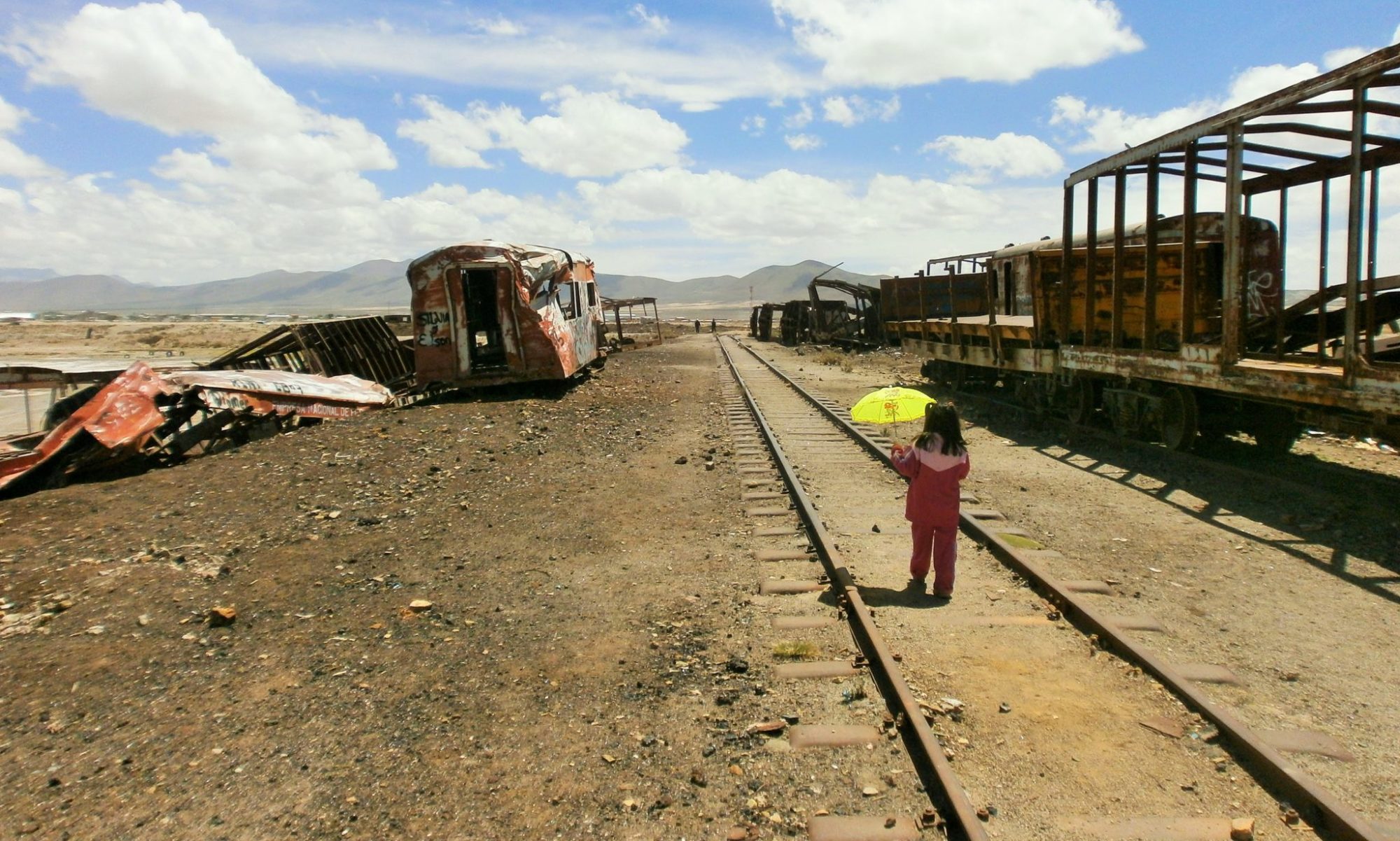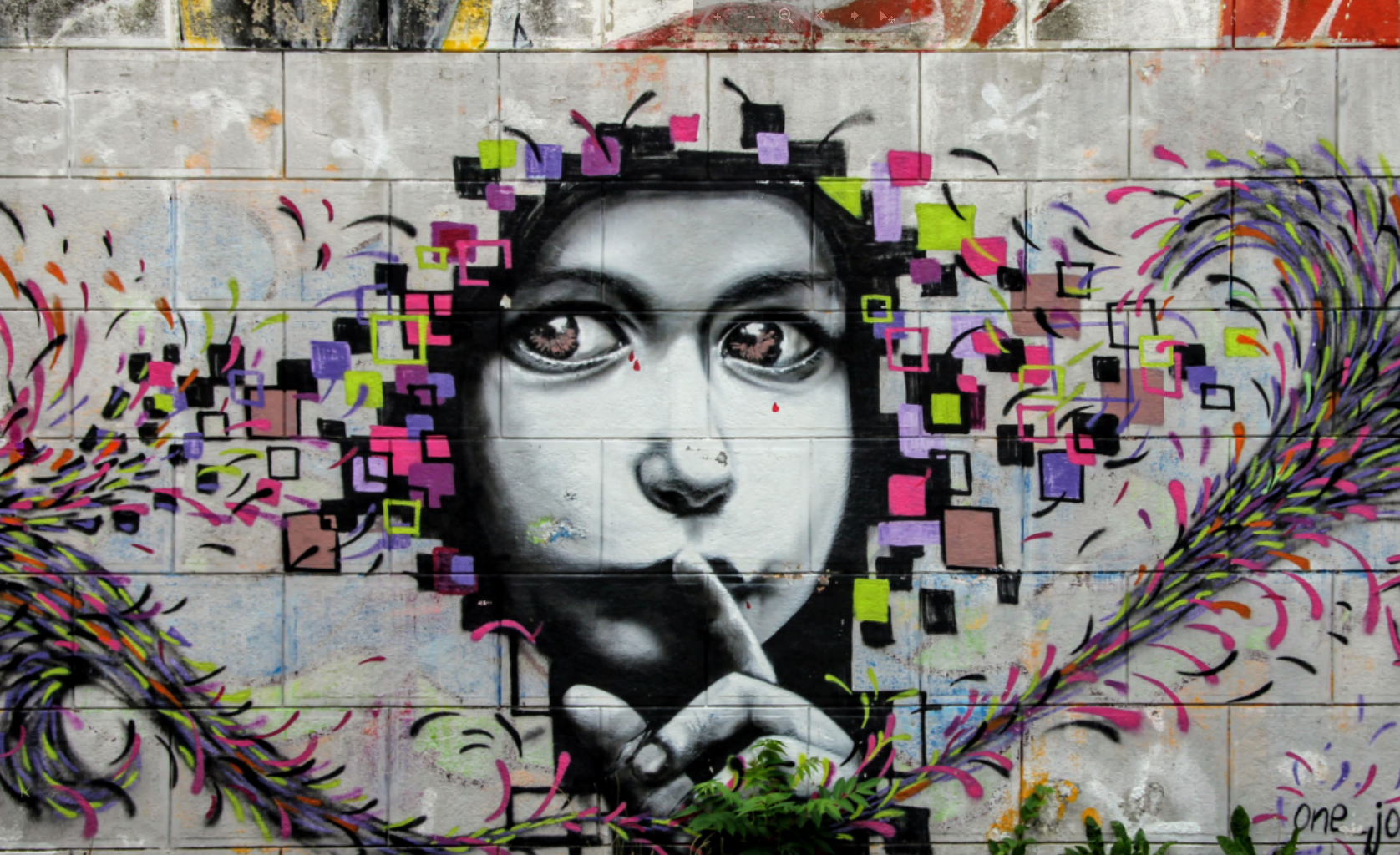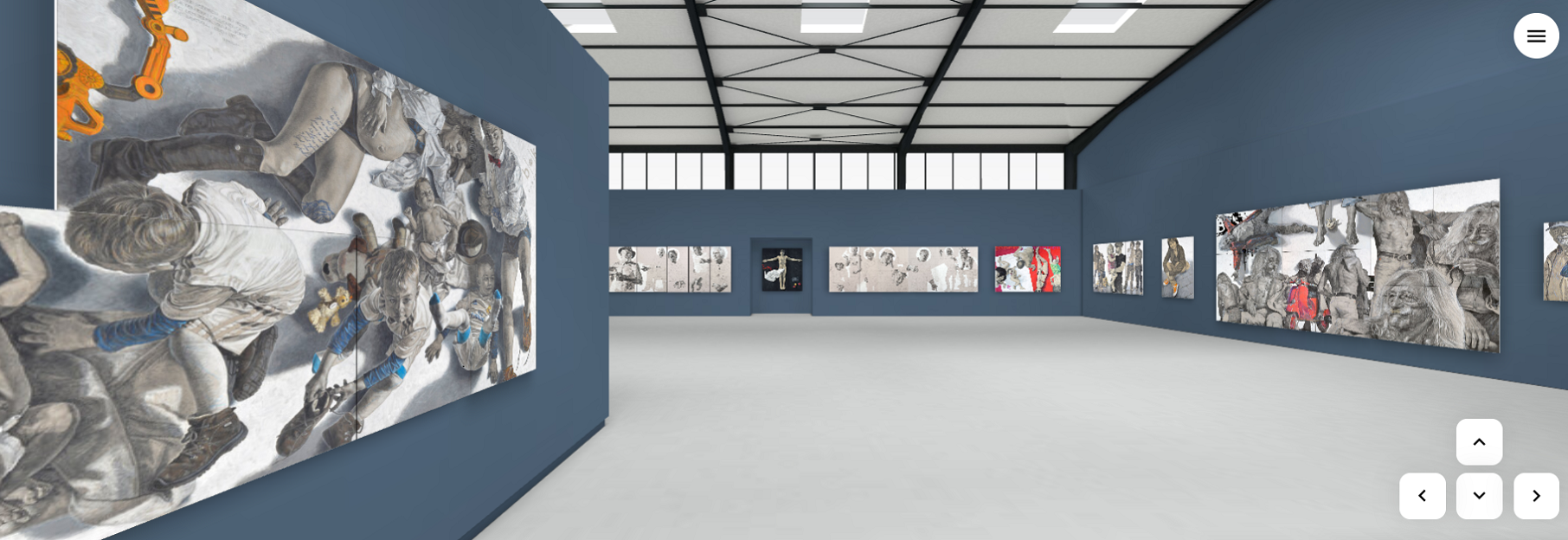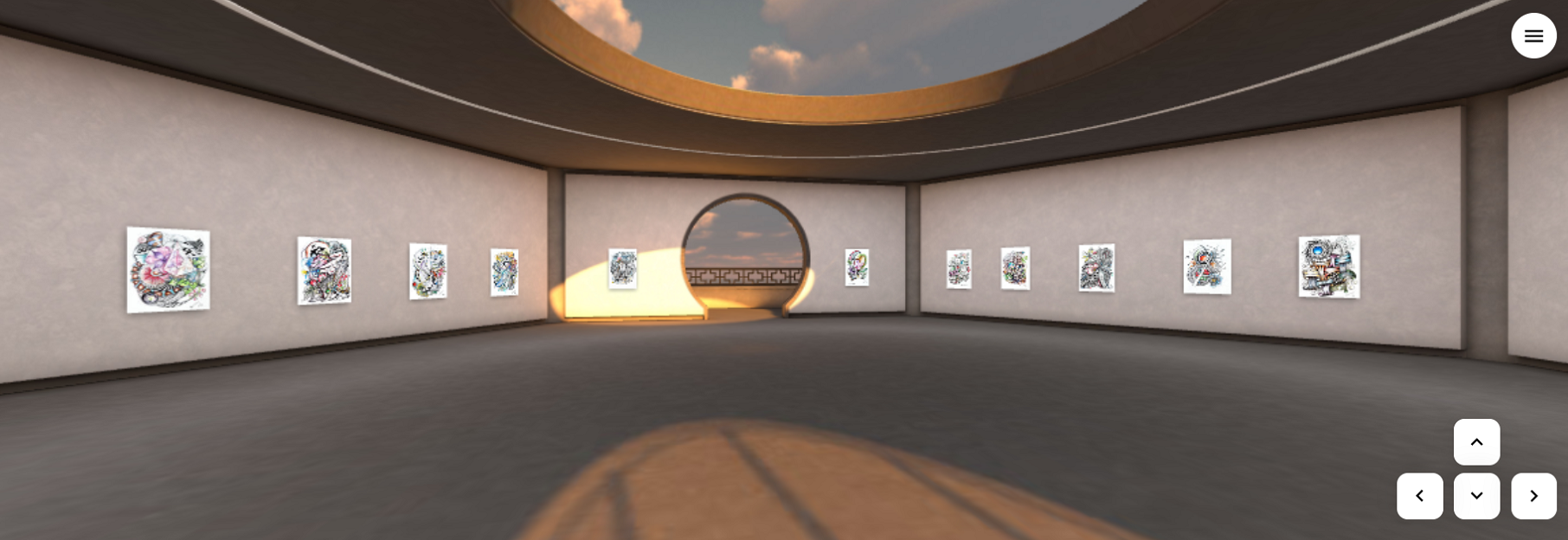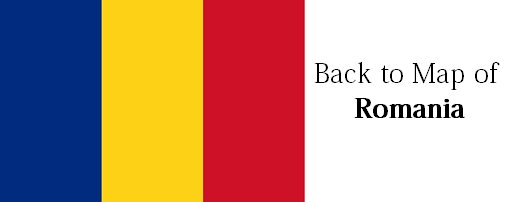Emil Banciu’s online library Banat Media offers virtual portraits of artists, exhibitions and art events in Romania. One book in particular caught our interest, the retrospective work on the great urban art festival FISART, which took place in Timisoara from 2011 to 2020 and attracted countless artists from all over the world.
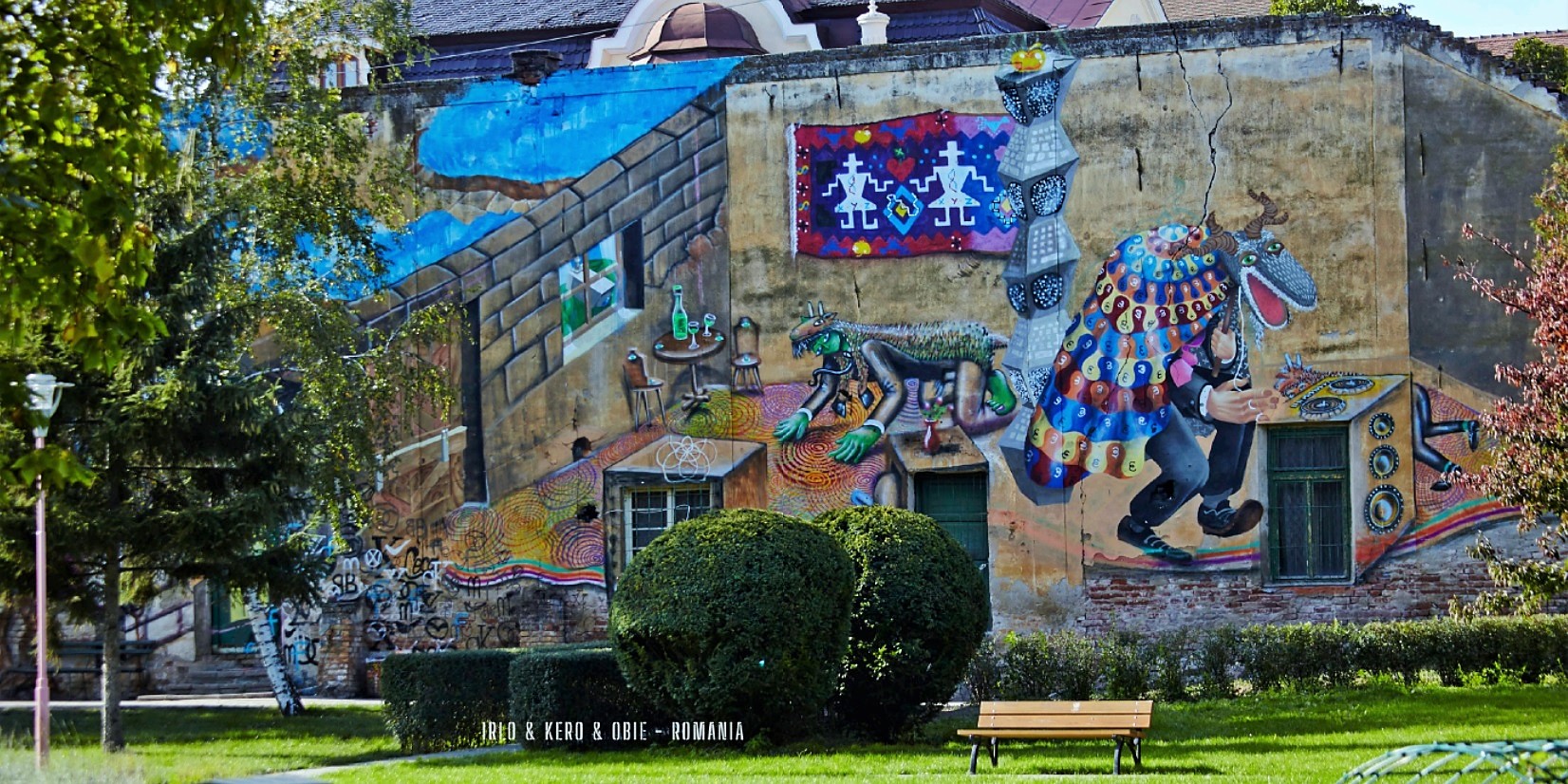
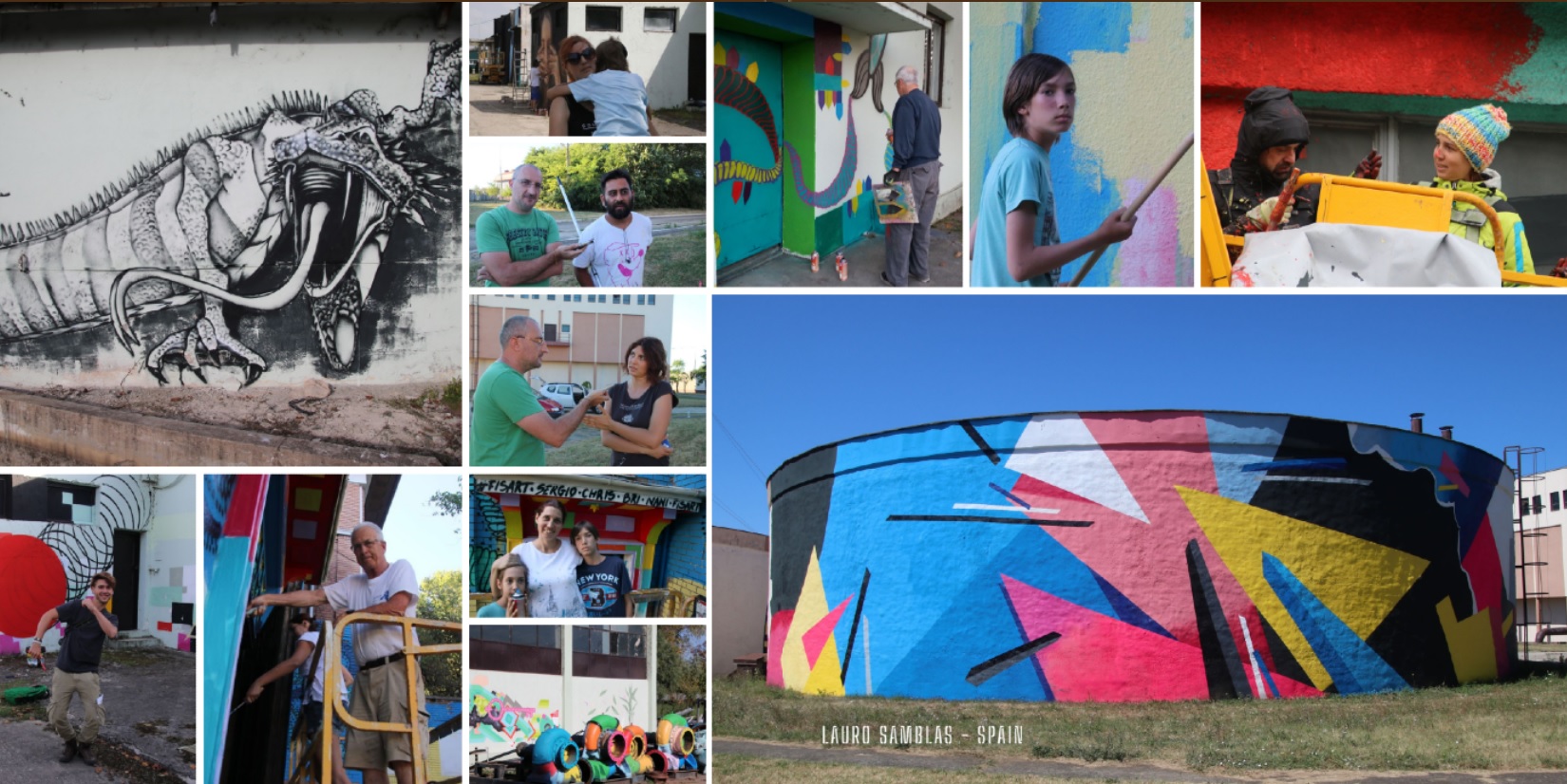
We talked in an interview with the publisher Emil Banciu, with the author of the book Corina Nani, who is also a professor at the Faculty of Arts and Design in Timisoara and initiator of the festival, and also with the photographer Sergio Morariu, who co-founded the festival and has extensively documented this fantastic art happening.
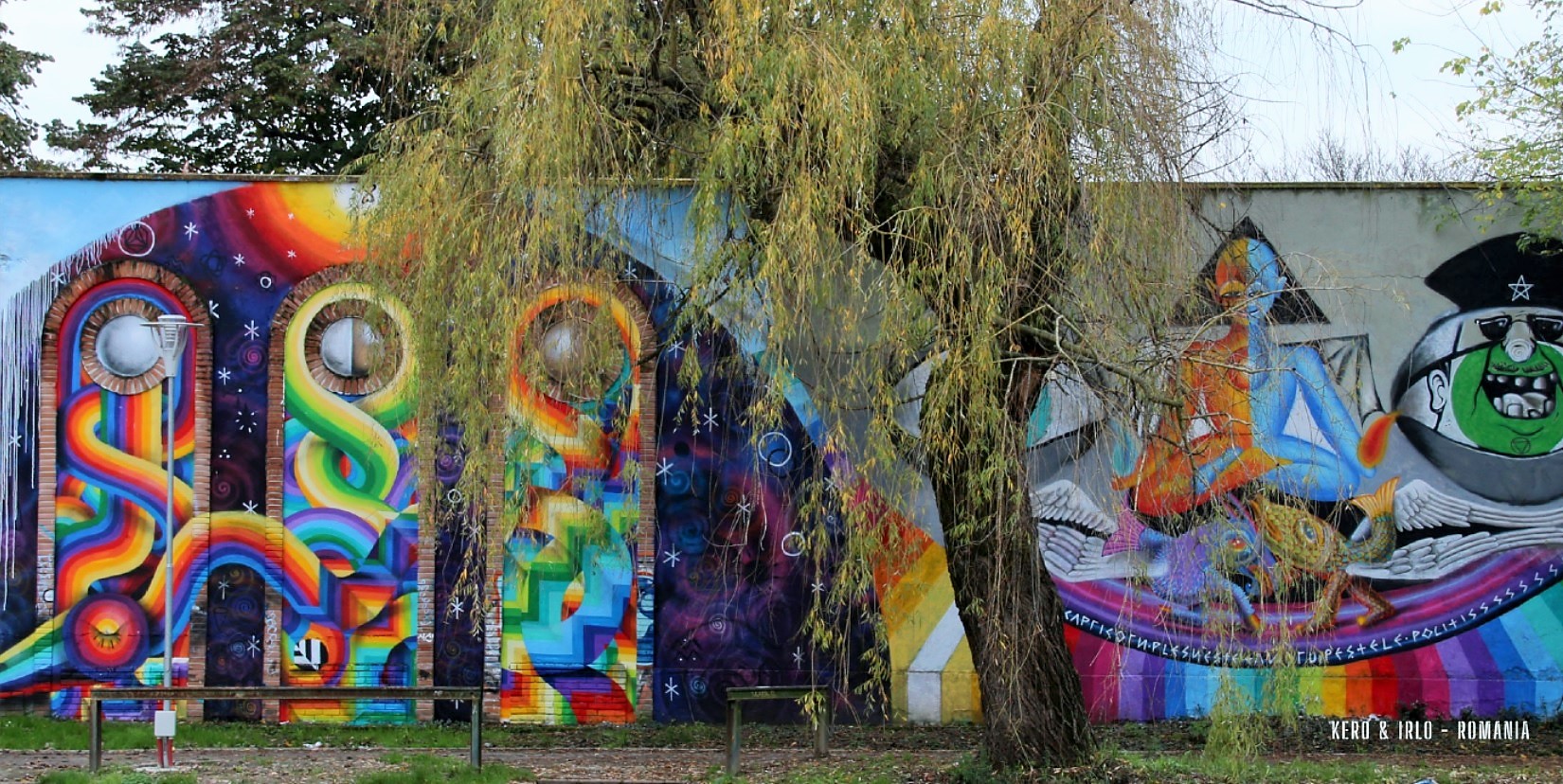
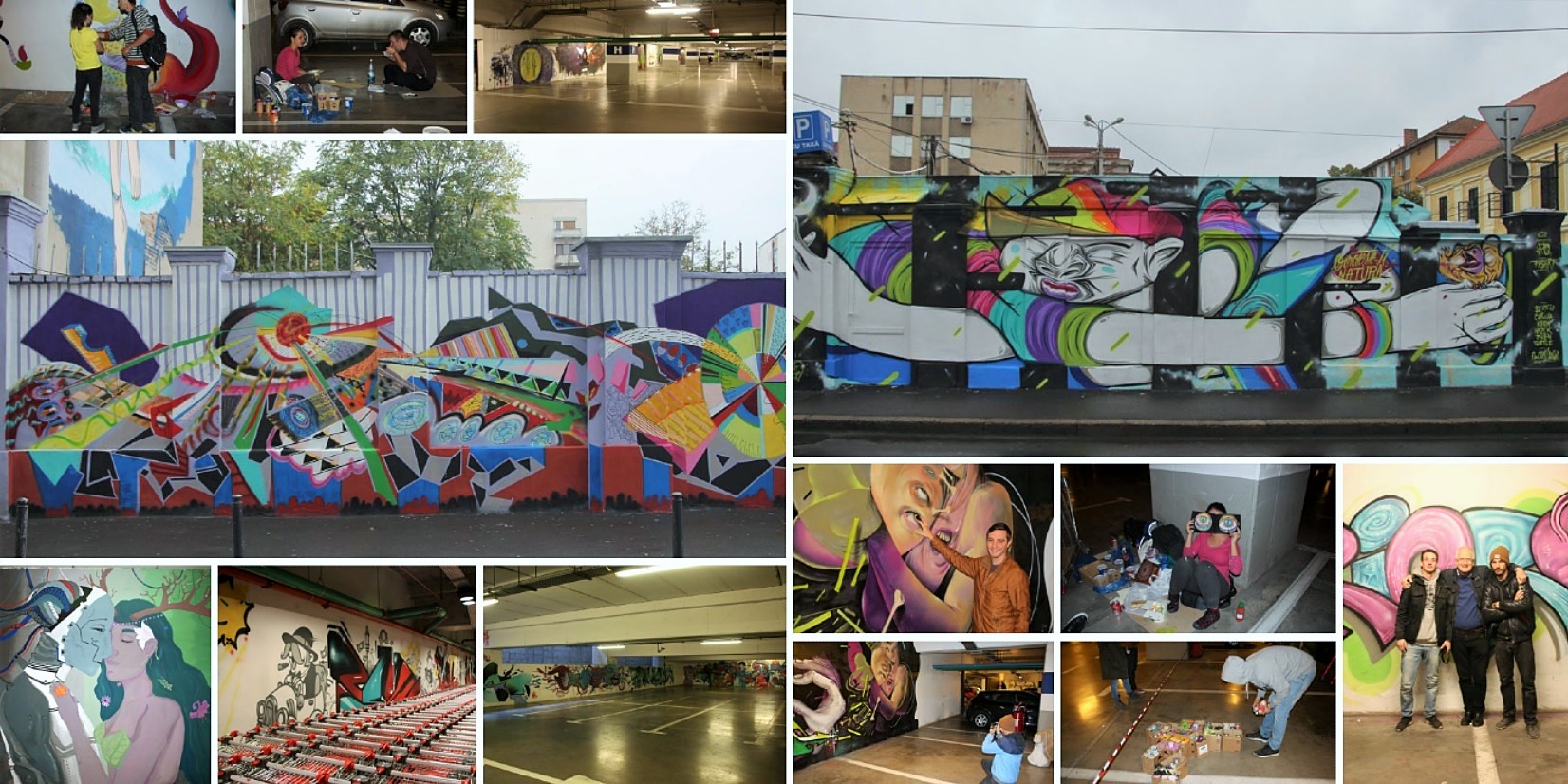
The Publisher – Emil Banciu
Hello Emil, your internet platform Banat Media is kind of an online library with virtual books, but there are also art profiles, interviews and virtual exhibitions. Tell us more about what there is to see and how the site works.
The Internet platform Banat Media, as it stands now, is a project of Emil Banciu Publishing House, which offers artists an additional option to promote their works on the Internet. In principle, it offers virtual galleries in 3D format, both for individual artists or as group exhibitions and galleries. Technically, it is possible to display hundreds of works, even a whole art museum. The second project part is about the time after the closing of an exhibition, to offer the artists a permanent internet presence in the form of simple web galleries and digital photo albums. For albums, in the test phase, a digital library is foreseen.
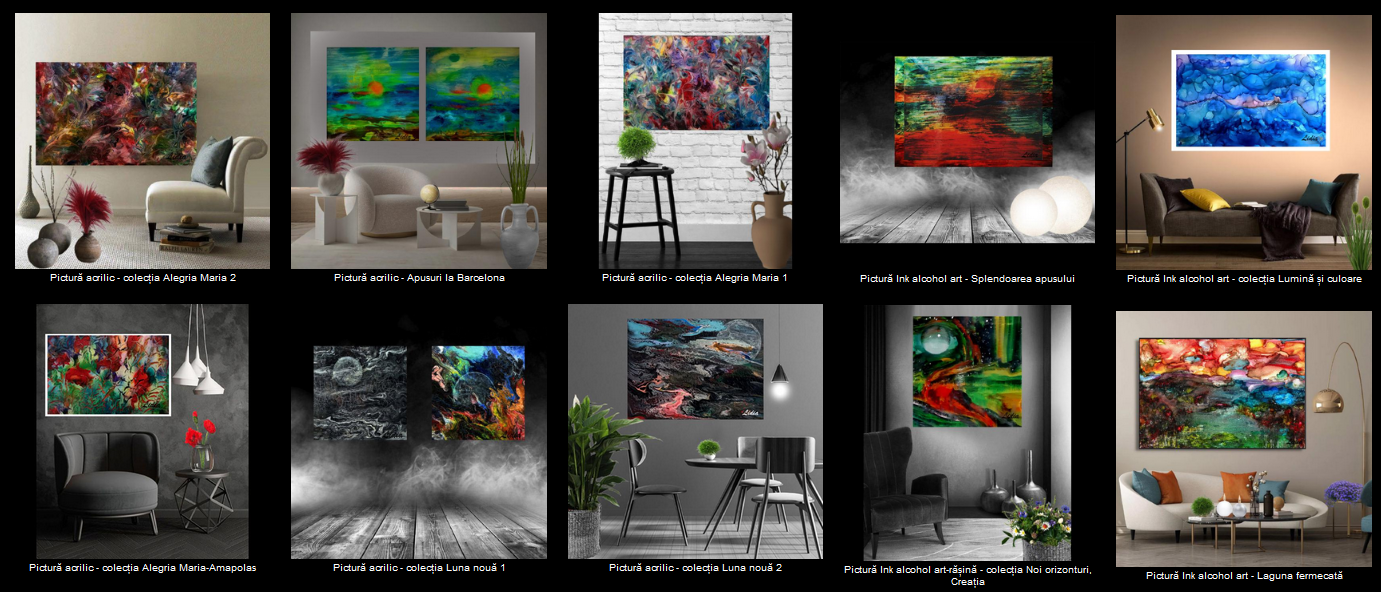
How did you come up with the idea to create such an interactive website and since when has the platform been around?
Emil Banciu Publishing House was founded as a small company in 2006, specializing in topics related to the historical and cultural Banat. The first products created by the company were postcards with integrated CDs, which served as information carriers. Thus, the first presentation CD of the city of Timisoara was created in seven languages and with panoramic images of the city’s sights – an absolute novelty at that time in terms of marketing. A series of presentations followed, e.g. about the Art Museum, the Village Museum and the historical churches. Another product was added in the form of the DVD panorama map, the first DVD map to include a virtual 360° tour of the entire Main River. This was followed by international projects on Arabic calligraphy and the Holy Mosque of Medina. A short time later, the development of technology led to the CD becoming obsolete. Banat Media reoriented itself and from then on devoted itself to the production of albums in digital format, the so-called “flipbooks”. Subsequently, the publisher also published art exhibitions in virtual 3-D format as an extension for the presentation of visual art in the online medium. At the end of 2021, most of the activities of the publishing house were discontinued, so that today only the art exhibitions and the digital library are maintained in Romanian.
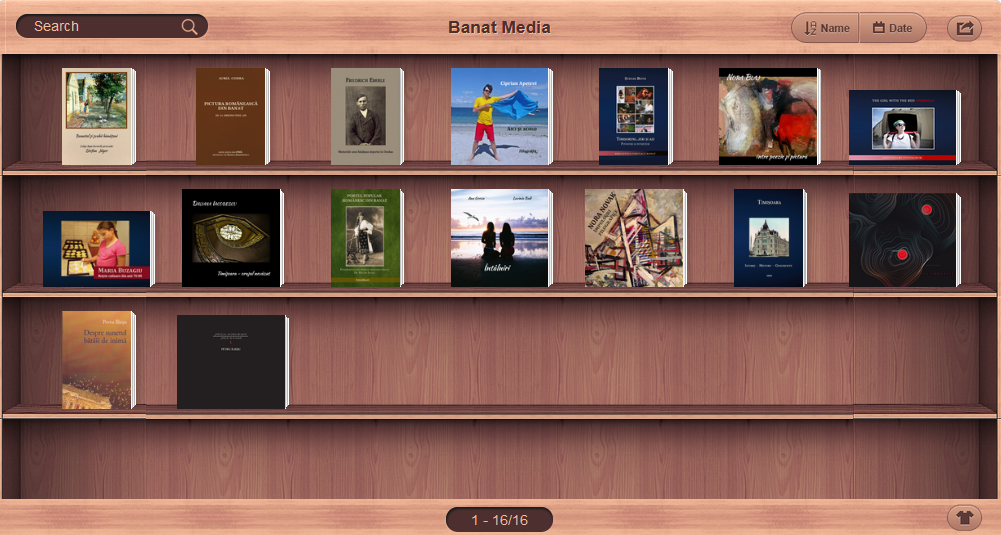
The works you publish are often about art, culture or history. Why did you choose these topics and what interests you about them?
I have always been a cultural person, and nowadays, seeing that in my hometown Timisoara there is little interest in culture, traditions and art, and unfortunately much is lost, although it was chosen as the Capital of Culture, I decided to do something about it. In the beginning, the publishing house was created and then followed the other projects.
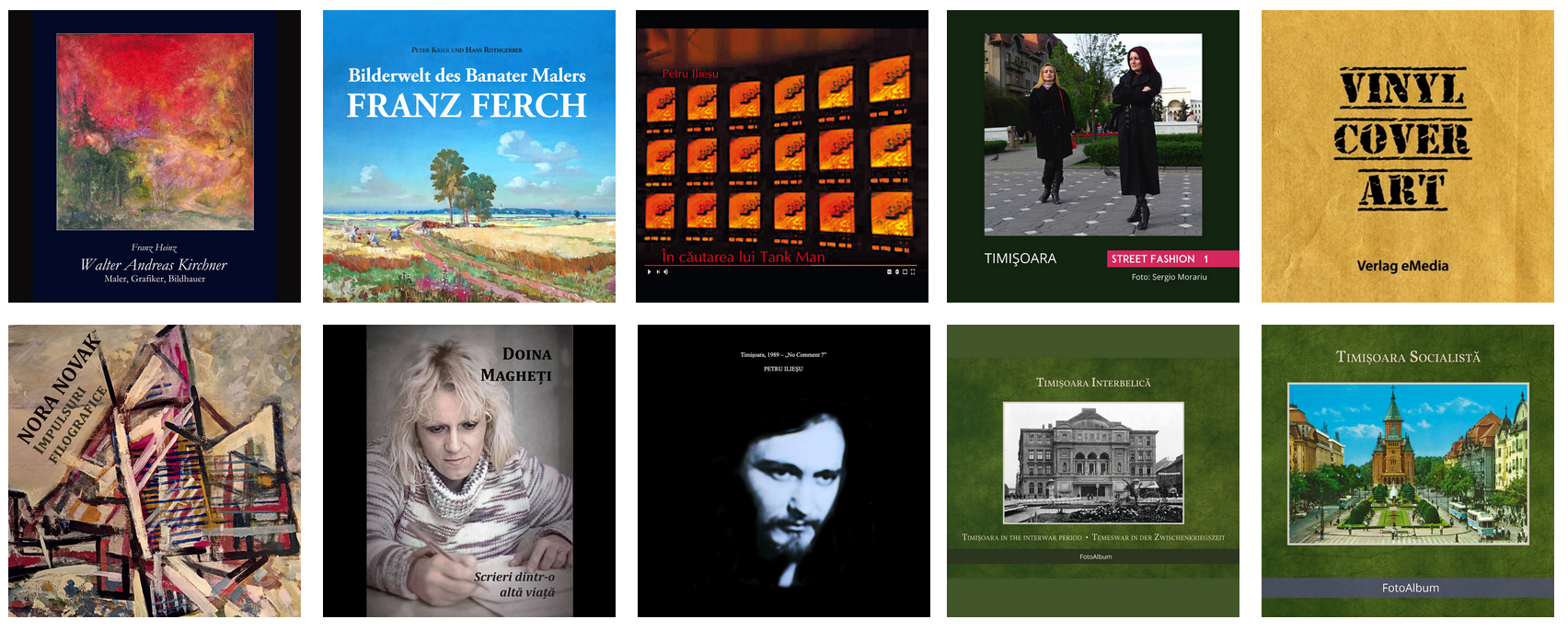
You also have a section called “Expo tm2023” where you present artists from Timisoara who live abroad.
Yes, it was a spontaneous idea. I was offered a room in Timisoara where I can present an exhibition about the work of Stefan Jäger. But then I expanded that with artists from Timisoara, who live abroad and are interested in exhibiting their works in their hometown. The problem was the transport, the logistics and of course the high costs. So I had the idea to make a multimedia exhibition in the form of roll-ups. One or two roll-ups were made for each artist and provided with a collage or a representative artwork. In addition, the name and a QR, where you could see after scanning the respective web gallery of the artist on the smartphone.
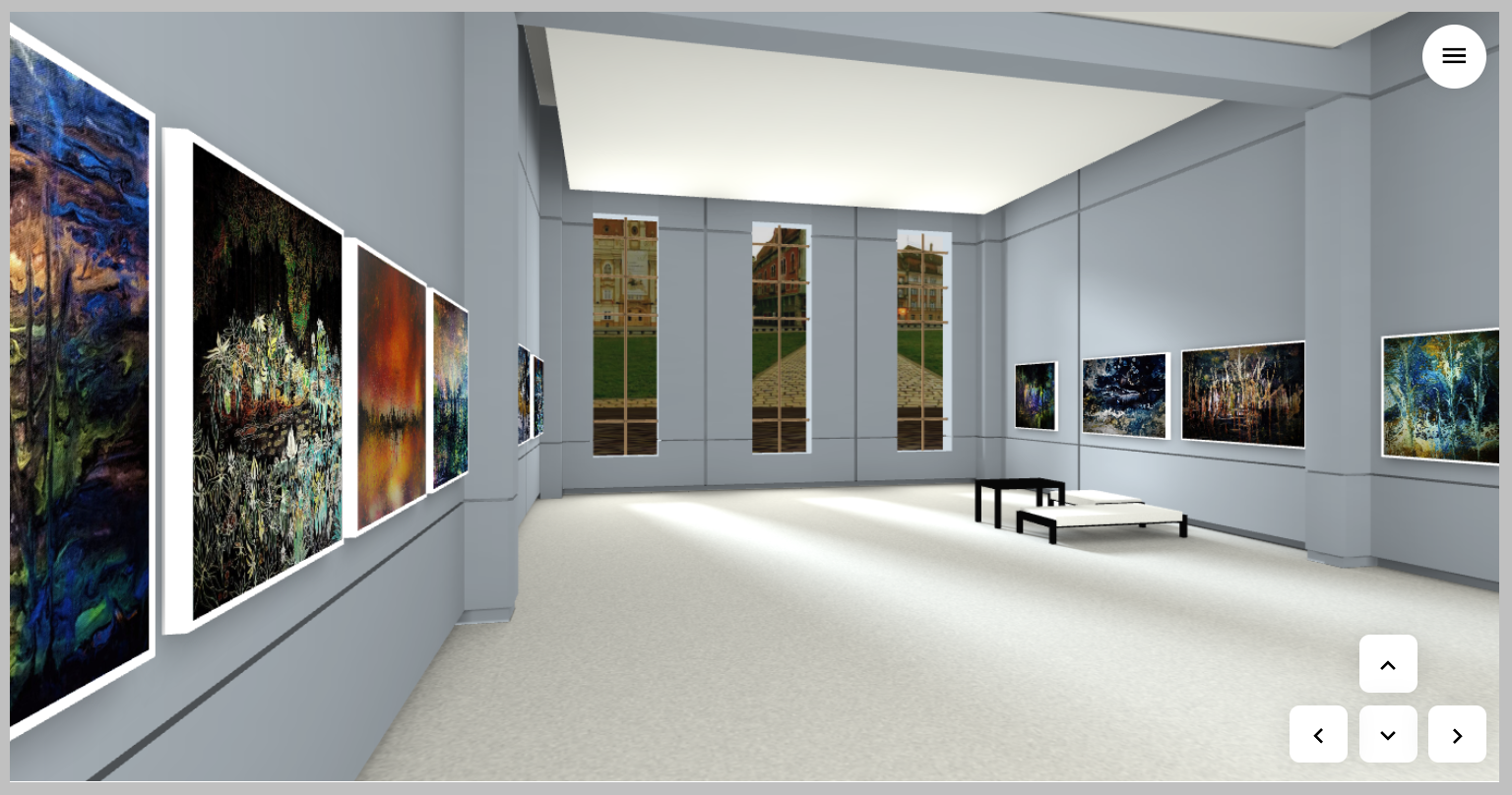
Since you started creating the site, more and more features have certainly been added. Tell us how you developed the site and what helped you?
The site Banat Media was created in 2003 and in the beginning it served to inform the Banat Swabians about the cultural life in Timisoara. From 2006 it became the site of the publishing house, where mostly digital photo albums with historical, artistic or literary content were offered. Since the beginning er also produced print versions of the albums and for a short time the website also functioned as a store. But after time we stopped the printing area and the site serves now mainly as a portal for the 3D galleries. Since I have entered into a cooperation with the agency Kunstmatrix, which generate 3D galleries, I could implement those new innovations easily.
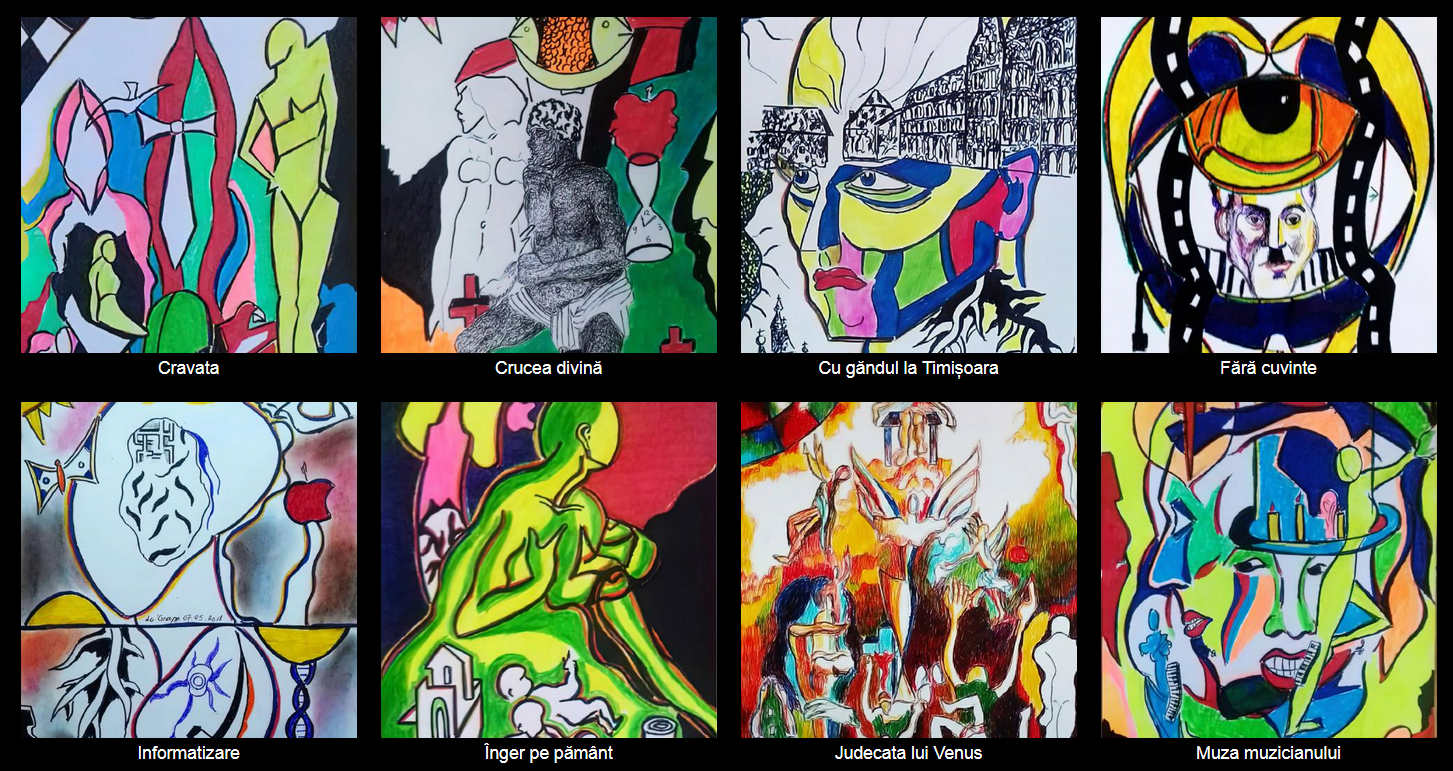
Tell us more about the interesting collection of works you present on your platform so far.
The digital books are a part of print media, which with the permission of authors and publishers are presented in an electronic format, so-called flipbooks. Of course, all works are interesting, but to give a few examples, we have albums about W.A. Kirchner and Franz Ferch, two famous Banat painters or the famous poems of Petru Iliesu. The historical albums about Timisoara and the Banat are produced as own brand. Other online books are also produced by my publishing house itself with artworks and commissioned by various artists, such as Vasile Pintea, Nora Nowak or Nora Blaj. And there are also books on art events, such as the retrospective work by Corina Nani on the great FISART FESTIVAL with photos by Sergio Morariu Bordan.
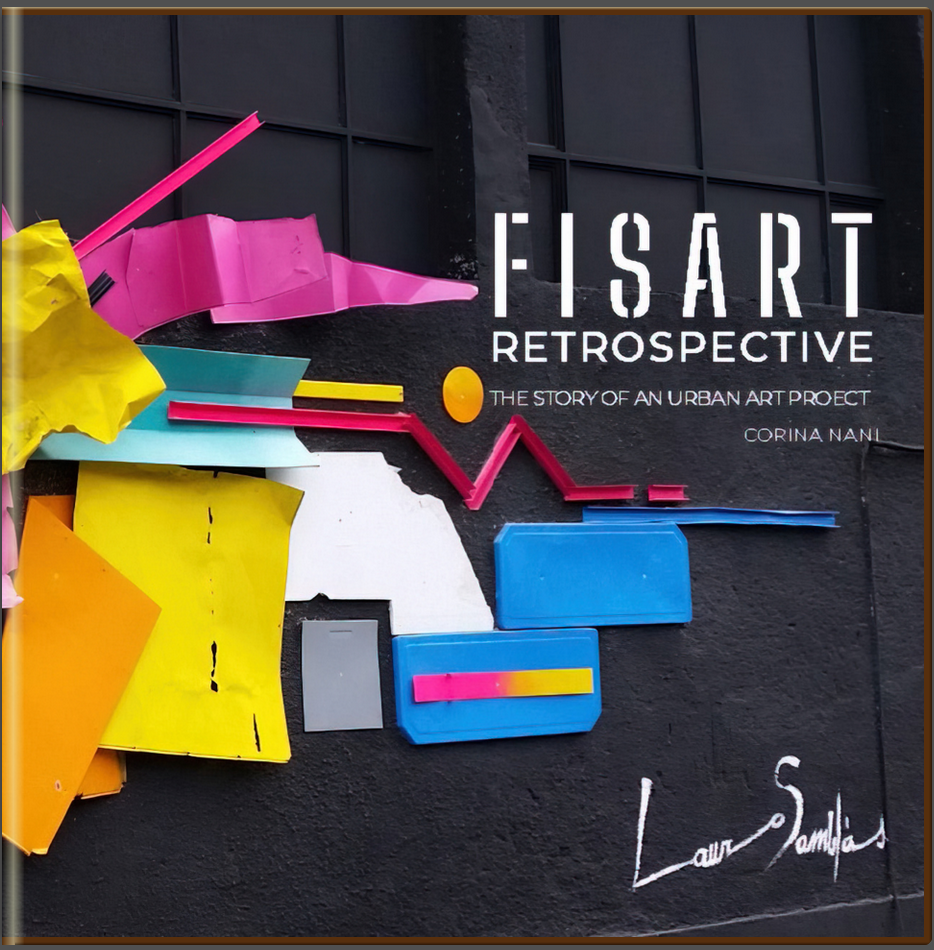
The Author – Corina Nani
Hello Corina Nani, you are the writer of the book about FISART at Banat Media. You are also a professor at the Design Academy în Timișoara. First of all, tell us something about yourself and your relation to urban art.
Yes, I am a lecturer at the Faculty of Arts and Design in Timisoara, but I am also an urban artist with numerous mural paintings in my portfolio. I have always been drawn to the dynamics of the city, to urban life. This is where my desire for research and expression in the public space comes from. Every wall and building has a story to tell, a unique past in history. I have also been intrigued by the visual codes of the streets, reflecting various ideals and messages, with artists transmitting their perceptions of the world under the mask of anonymity. My interest in street art as a subject lies in the fact that this practice reflects the dynamics of how the public understands visual culture and urban life. Being created on a large scale and in visible locations, it’s possible for these walls to have more viewers in a single day, just as many as the paintings in all the galleries and museums in Timisoara in a year. FISART is the International Street Art Festival Timisoara and this happening attracts the whole public, and not only those interested in street art or art in general. The audience, who, by the way, talks a lot about street art, takes photos, and chooses their favorites, contributes to the cultural dialogue and appreciation of urban art in an interactive and participatory manner.
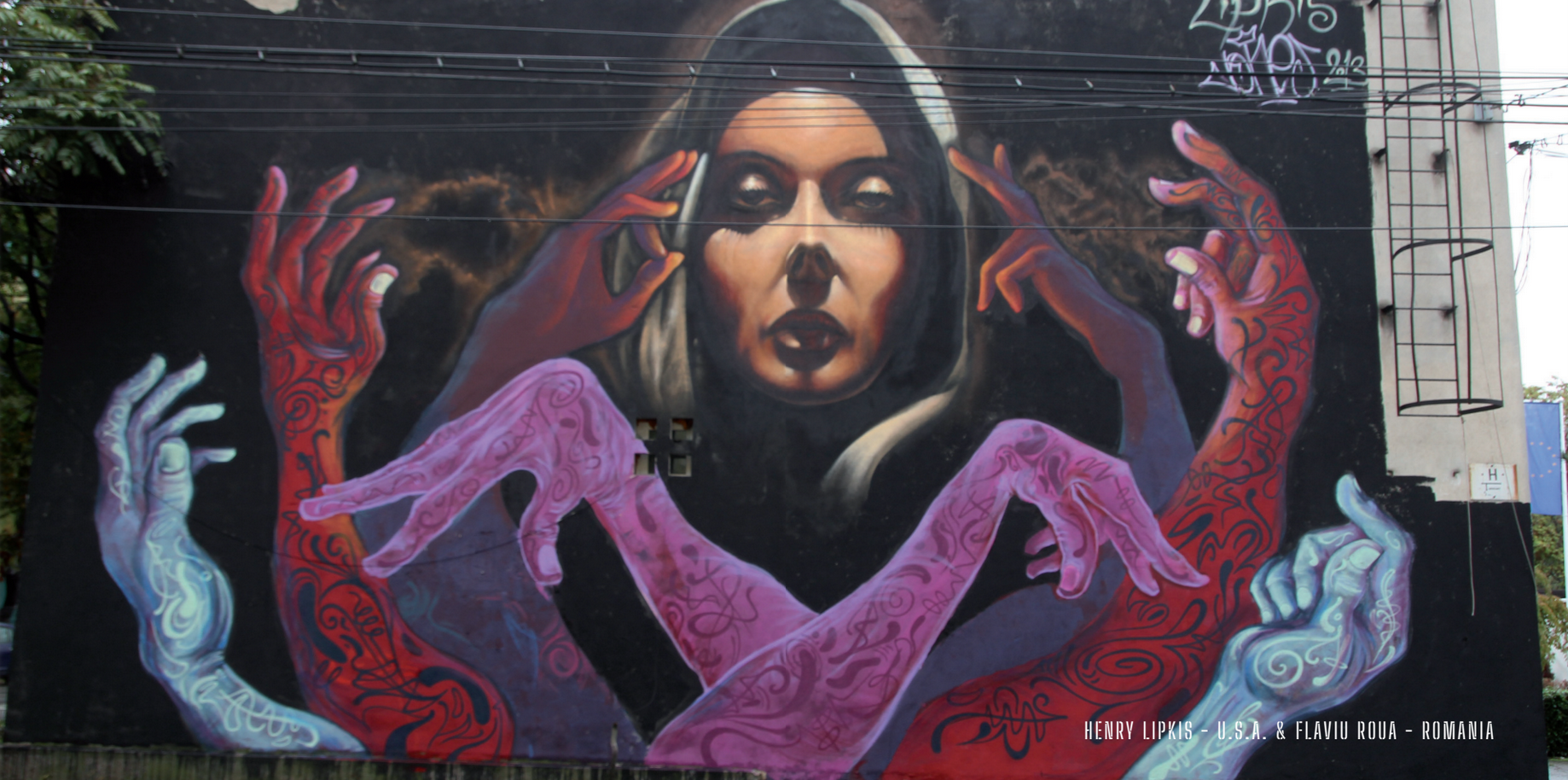
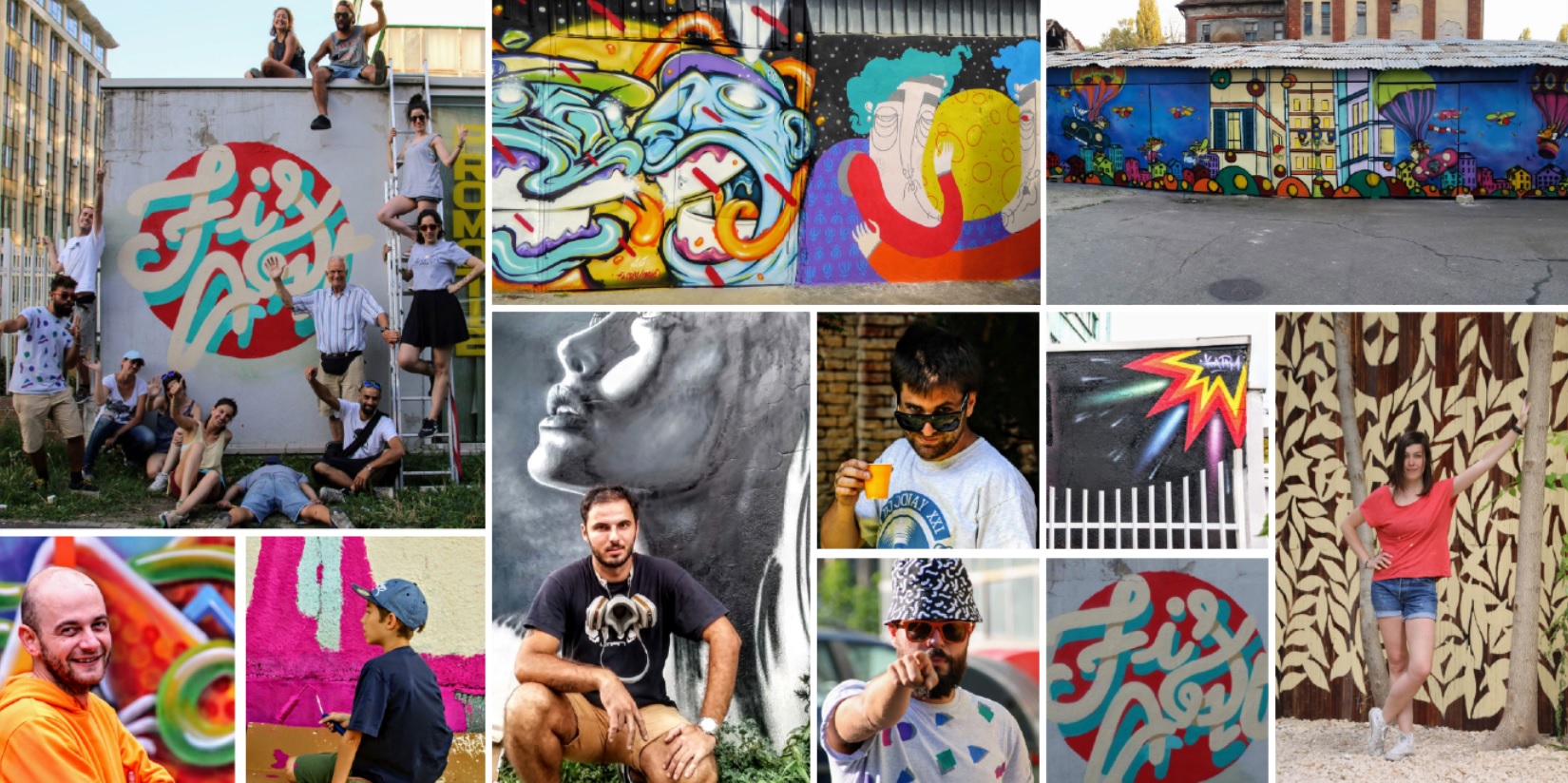
In 2011 you were one of the initiators of the FISART project. Tell us how the whole idea of this urban art festival came together and what it is about.
In Timișoara, as in many other cities around the world, the phenomenon of street art, whether artistic or not, transforms the canvas of the city into surfaces loaded with signs or linguistic messages, where the play of visual discourse asserts itself as multidiscursive and multimodal. The ‘corrupted’ walls that construct that visual ideology of protest and dissent attract attention and curiosity, becoming a subject of visual reading for photographers passionate about this phenomenon. And this phenomenon was discovered and documented photographically by Sergio Morariu, a photography enthusiast, and due to the desire to promote cultural development under the concept of Timișoara Open Art City, we proposed the realization of an event of street art, that form of urban expression to which we can no longer remain indifferent. Although it is already a vibrant and attractive cultural form, on the one hand, it is used as a means of raising awareness about social and political issues. And on the other hand, it is simply emotion and adrenaline. At this moment, I consider that art is in a delicate situation because art itself continuously attracts more and more things. This can be observed. In art, there are many interesting ideas that cannot be put into practice in a museum. There are too many restrictions. Everything is prohibited. But in the city, the street becomes a kind of laboratory, an experimental world. At the same time, it involves new forms of creativity. The fact that cultural manifestations are beginning to migrate from the intimate space of the workshop, from academic institutions to the urban space, to the collective space, to be precise, is captured entirely by the public, by this whole creative process. Let’s say that it has gained its status as art with difficulty. It has gradually migrated from vandalism to a manifestation and an artistic movement. Starting from this rich initial offer of works in the public space and anticipating the impact it would have on cultural development and the evolution of urban life. So we initiated the project called the Timișoara International Graffiti Festival 2011. Through this event, we aimed to eliminate the negative perception of the uncontrolled, spontaneous phenomenon and, above all, to integrate it as a form of art of great impact and importance in the cultural development of the city, following a current trend in many other cities around the world.
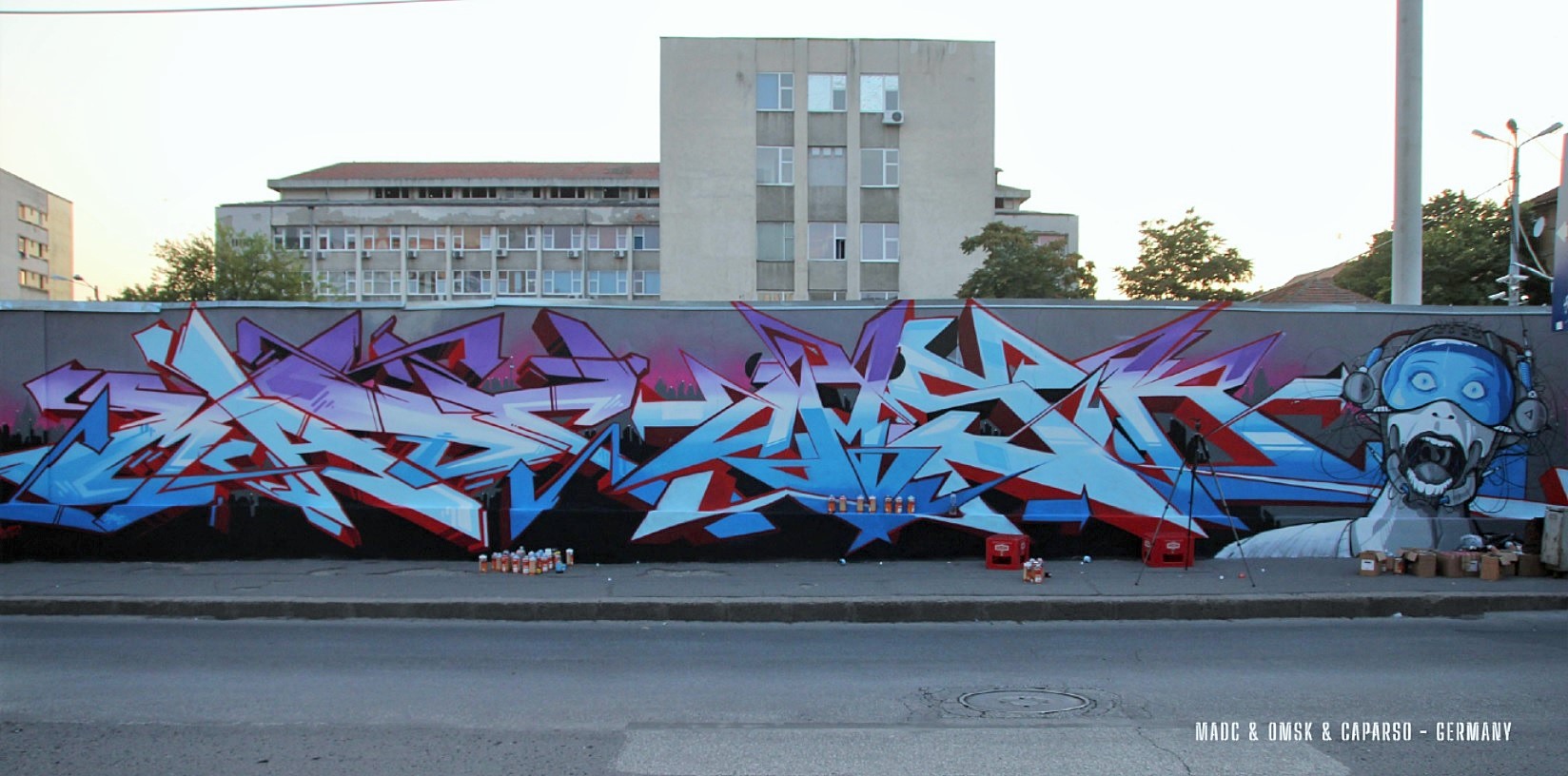
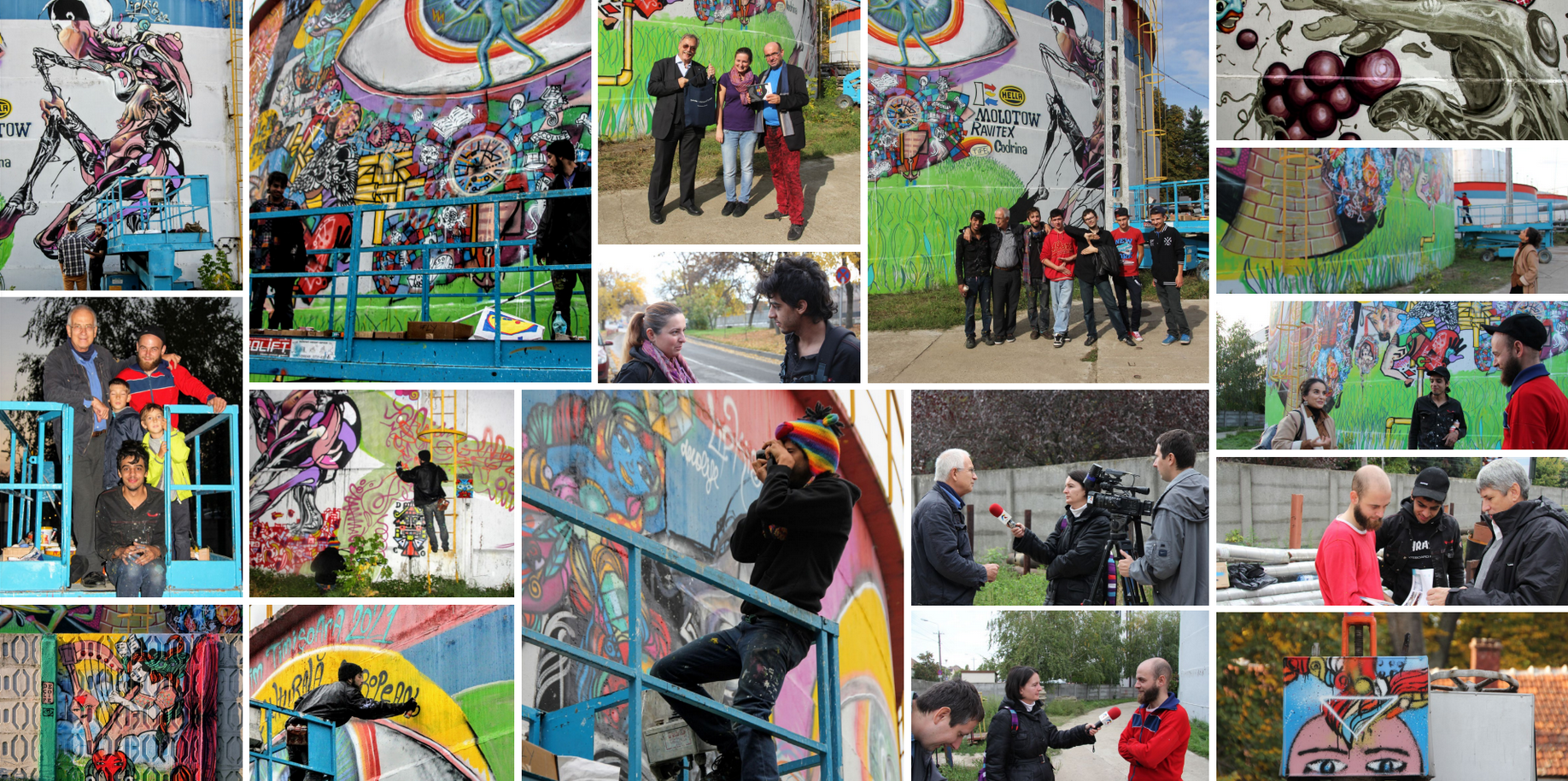
Your words sound very idealistic and full of passion, that’s awesome and it’s also great how this festival has developed. You have organized this fantastic event again and again for over 10 years and brought more color to the city. Then in 2022 with the book at Banat Media you created a retrospective work to FISART together with the photographer Sergio Morariu. But there are also smaller photo collections online and actually the whole project is documented really good.
As a result of the desire to promote the cultural development of the city, Sergio Morariu created a photographic inventory of graffiti and street art works, followed by a series of presentations of these works in the virtual museum within the Timisoara’89 Foundation. In 2011 our collaboration began… all from a pure coincidence… and it started from Mr. Sergio Morariu’s passion for photography… It all began from a pure passion for street art, loaded with meaning, depth, and symbolism. This is how the annual street art event in Timisoara came to be. Every year, he immortalized the entire event, creating a true archive that can be found in the albums published as a testament to what it was.
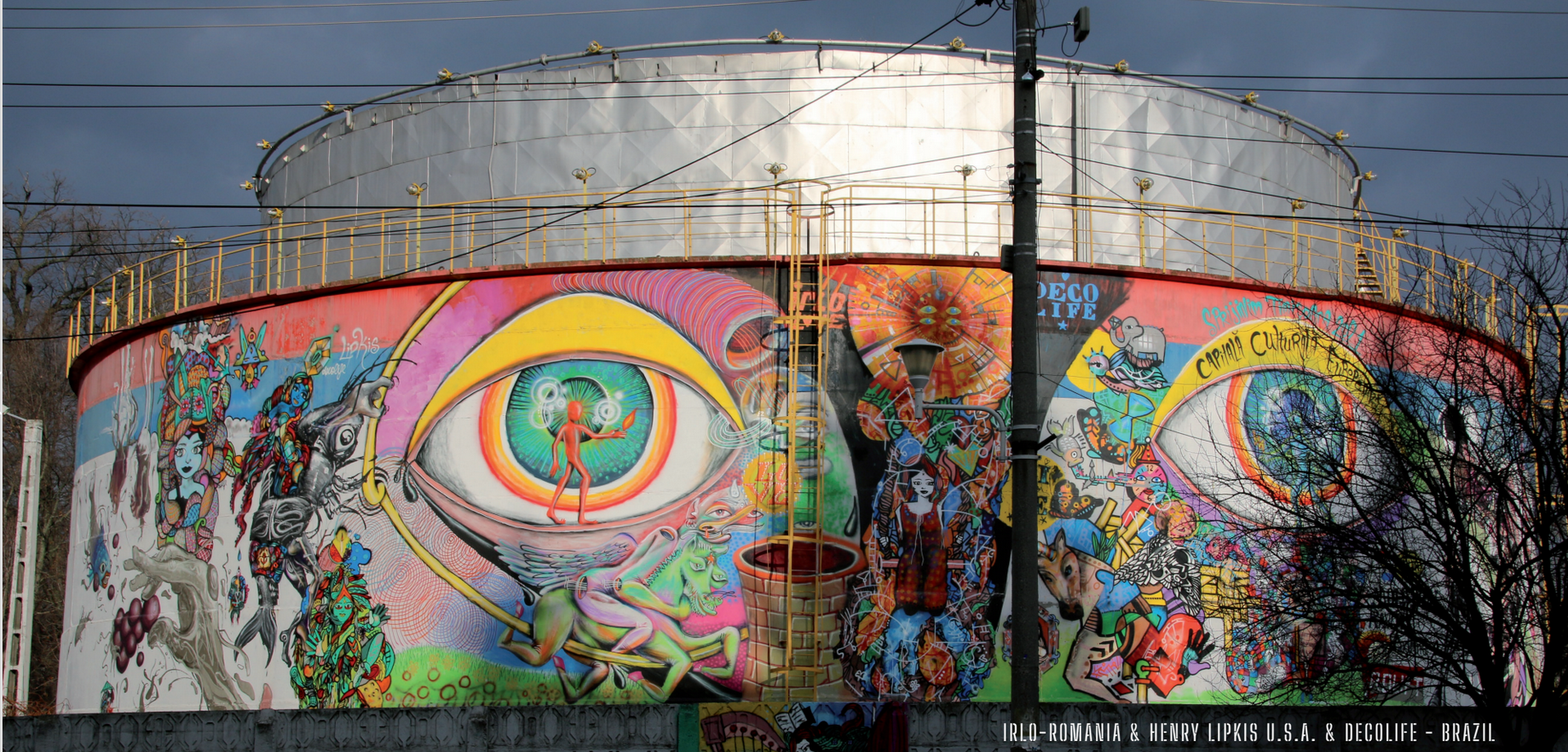
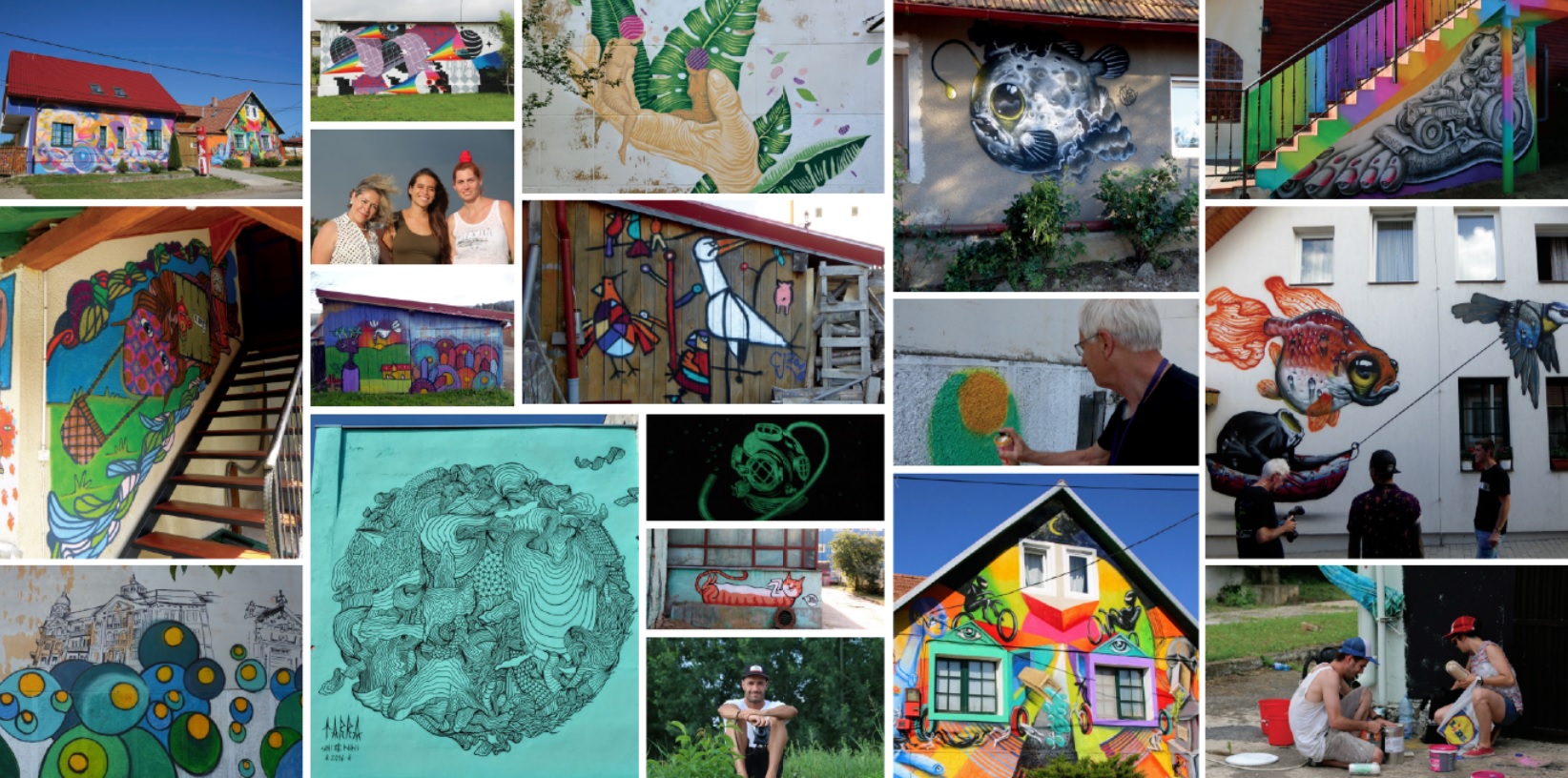
You are also an artist yourself and you also spray graffiti. What do you paint and how do you do it?
The interventions in public space began in 2011, with the organization of the first International Street Art Festival in Timișoara, in collaboration with the Municipality of Timișoara and the city’s cultural institutions. Over time, this festival gained artistic value and international recognition due to renowned international artists. My early interventions in public space could be considered timid. Experimenting and working in various areas such as graphics, illustrations, graphic design, and interior design, my interventions in public space offered me new opportunities for discovery and encouraged me to constantly explore new forms and techniques. Thus, I oscillate between abstract and figurative in my creations. The creative process represents a true adventure filled with games. It is a passionate and aesthetic symbiosis between drawing and street art. My works in public space have become a statement of passion from two inner voices, a collective force that unfolds between the city’s walls and exhibition halls. My projects start on paper or canvas and then expand into public space, or vice versa. In enclosed spaces, I can focus on deeper interiorit and expressing symbolism. While artistic intervention in public space becomes an exploration of shapes and colors, it allows the imagination to flow freely. It is a creative surprise. I work intuitively on walls, allowing me to explore and develop the concept during the work, relying on the present moment. For example like the illustrations for Pasmatex or abstractions for the Mister Freeze event in Toulouse, there are also artworks in France, or Kassel, Germany. Another important aspect is the relationship with the building itself, aiming to make it unique and fit into the surrounding environment. This process involves learning and the constant discovery of new ways of artistic expression.
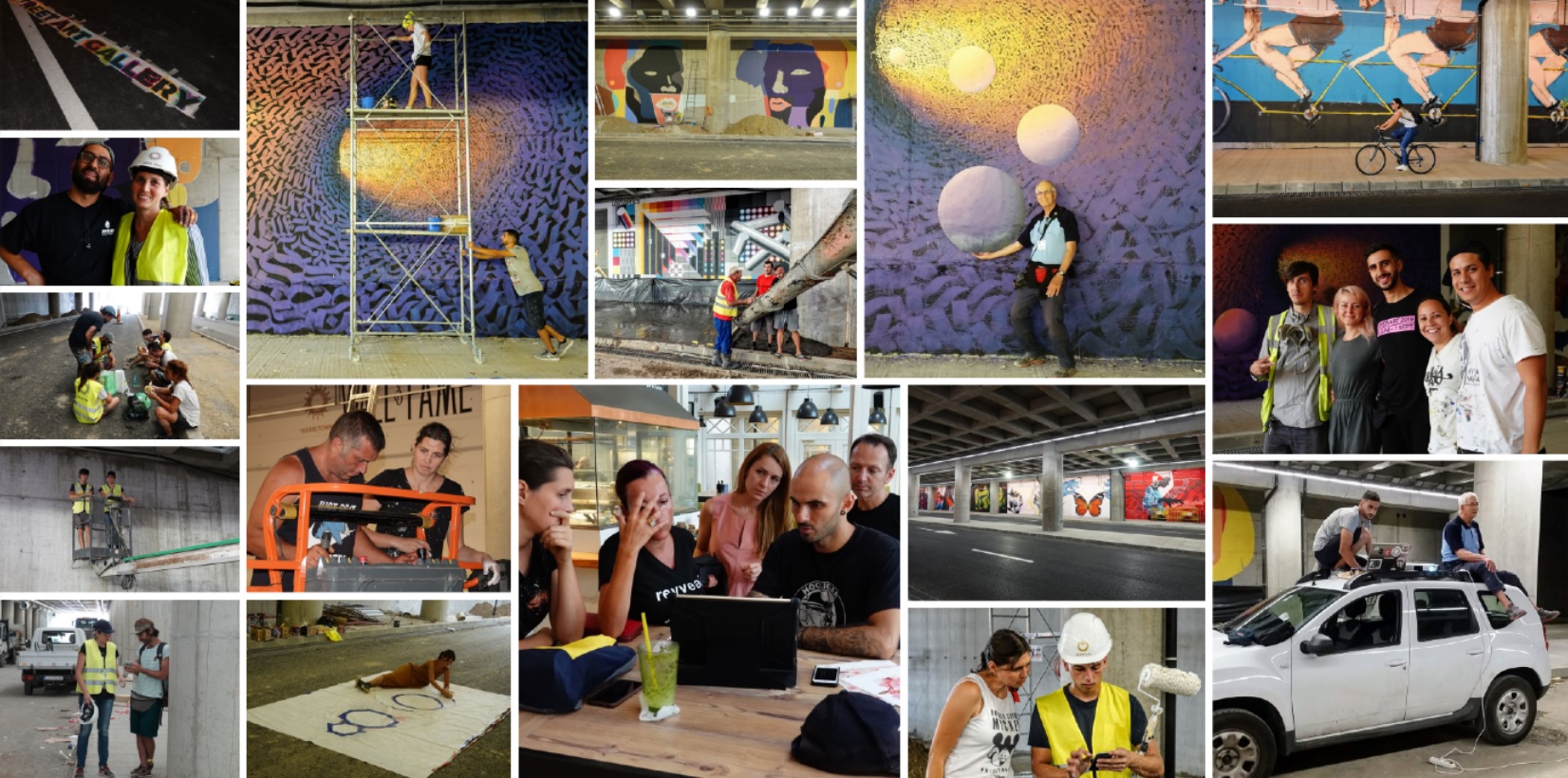
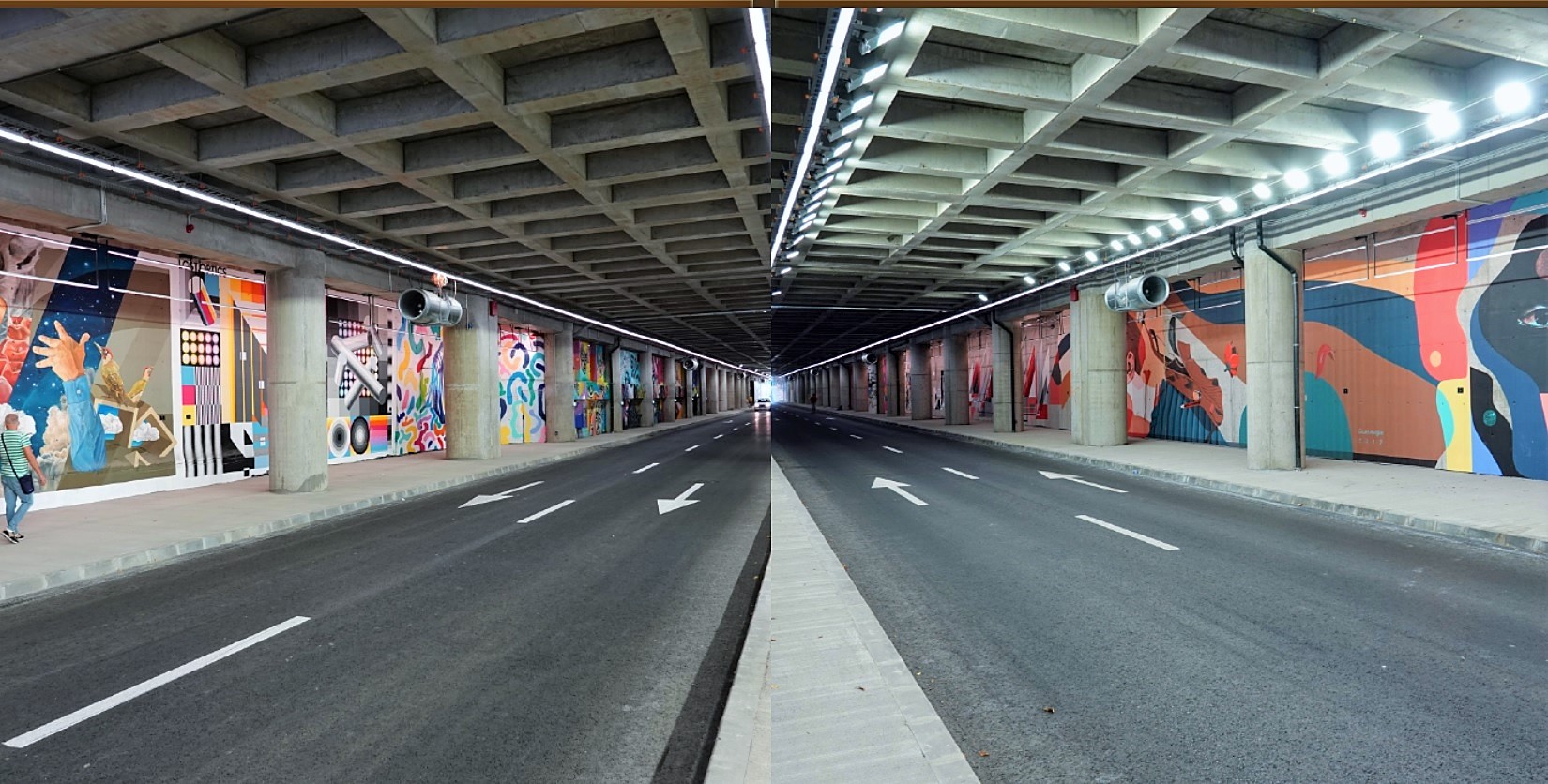
We have photos of some murals and also of the Undertown Street Art Gallery on our website, the story about this place is also described in your book. This place is just fantastic!
I visited your website and was pleasantly surprised to see some of the works photographed. This project was the greatest challenge. To create a Street Art gallery from scratch. It was something unprecedented because everything was being built from the ground up, and I experimented alongside the participating artists, experiencing what it’s like to create side by side with construction workers, amidst concrete mixers, dump trucks, noise, and constant hustle. But we succeeded, and that’s what matters! So much emotion, fear, sleepless nights – how beautiful it all was, and now I still feel the enthusiasm… an extraordinary experience that made me more responsible, organized, and attentive to those around me. It was an experience through which I developed friendships with special people and brought me great satisfaction… It’s an open space that brings together all forms of artistic expression, different styles, and approaches, essentially being a panorama of free, independent creation in a public space.
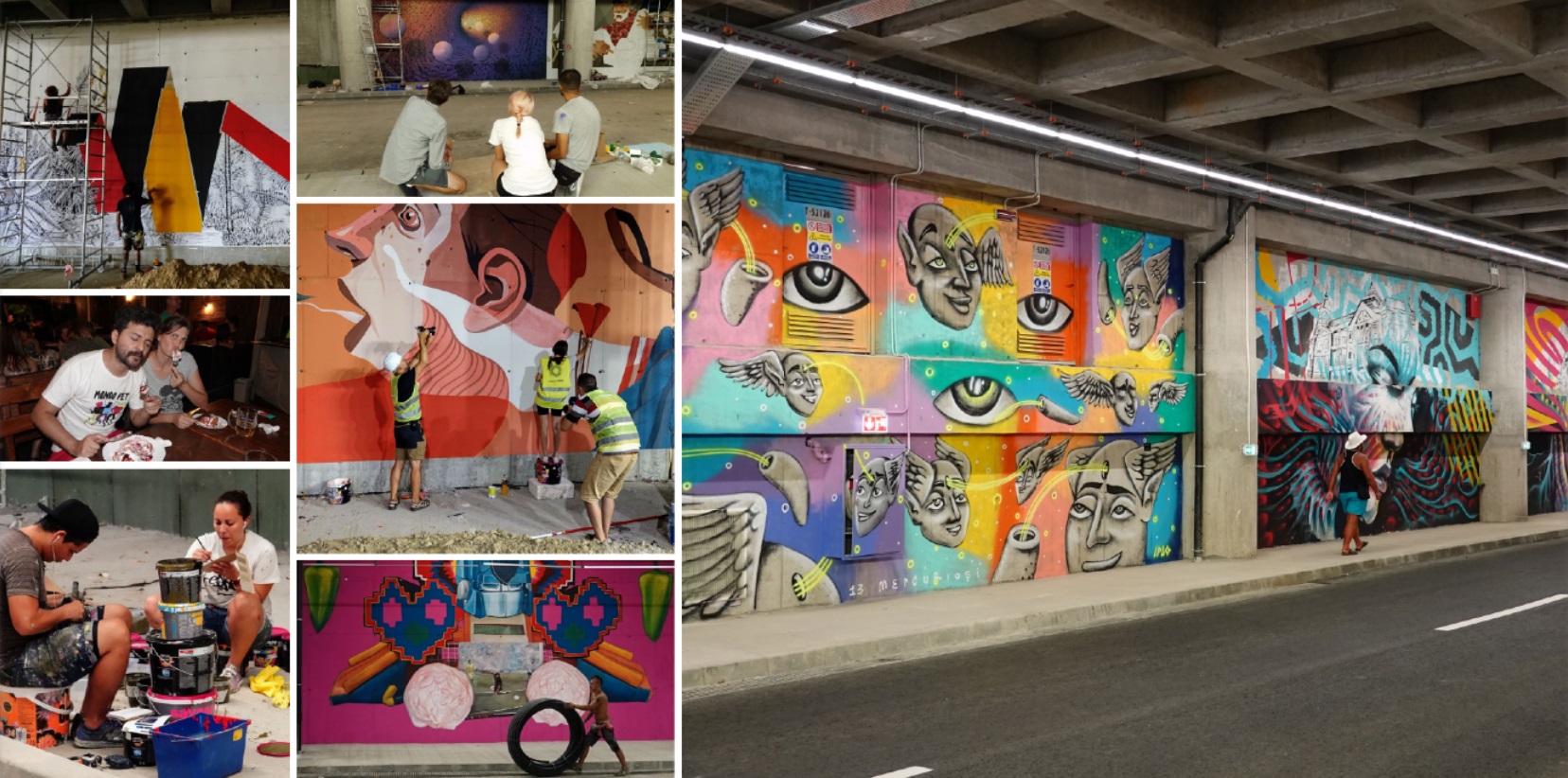
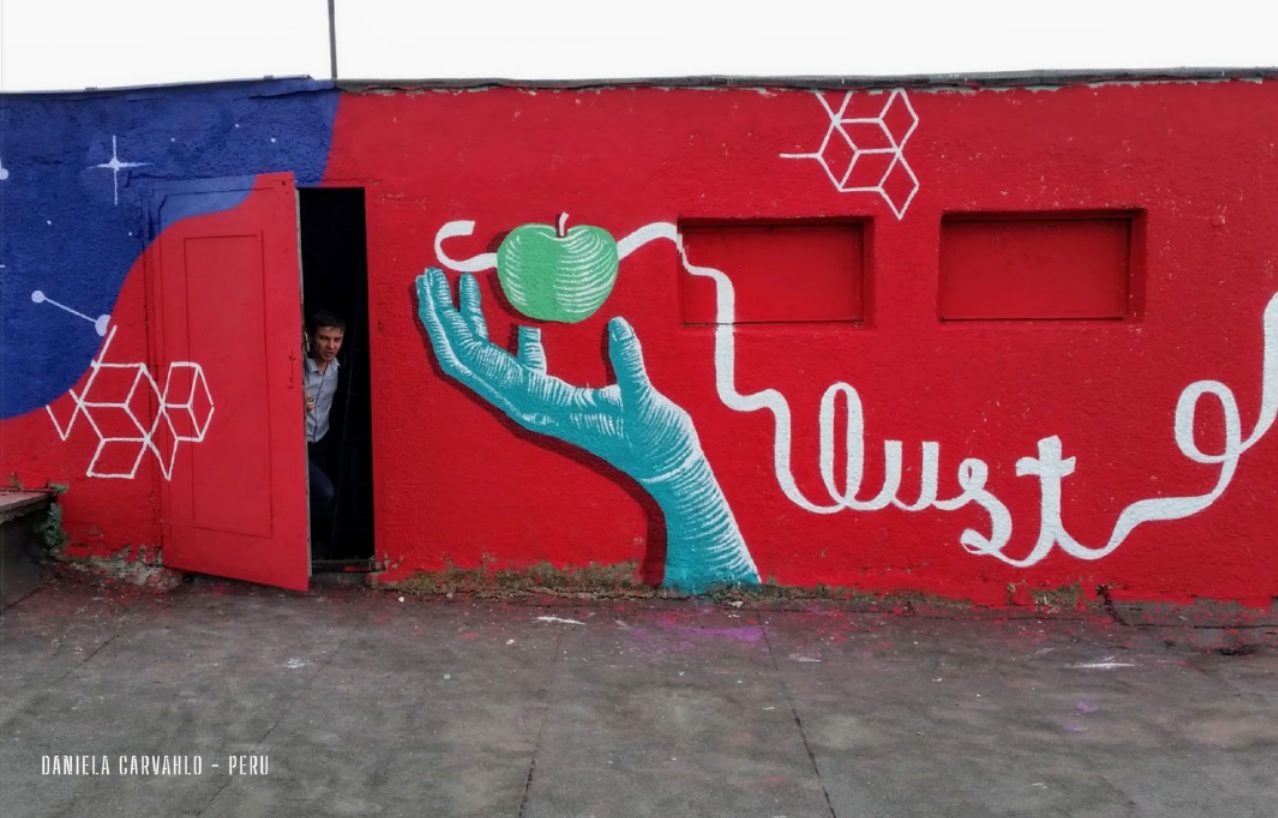
From your point of view, how is the perception of urban art in Timisoara and România currently? Do people perceive the artworks in urban space positively? Do they care about it at all? And how has that evolved over the past few years?
From my point of view, it is important to have as many urban art promotion events in the country, and why not, for street artists as well. I don’t think the issue of separation arises anymore. Due to its capacity to address and encompass a multitude of subcultures, to communicate on a global scale, urban art emerges as a structure characterized by postmodern hybridity, which seems to maintain its creative capacity through a multitude of works and genres. Today, with artists in constant motion, there is a connection between creative studios, art galleries, urban spaces, and the virtual realm, because street art itself reveals new ways of looking at and experiencing the city and its spaces. When well-placed, it enriches the meanings of the space in which it appears, making passersby more aware of the presence of art in the urban space. These works created in public spaces cannot be preserved in the classic sense of archiving; they are, in fact, created to convey a message, to be seen. Of course, there are exceptions in which urban art ends up being preserved and even protected, as is the case with the works of Banksy or Antoni Tapies. The fact that more and more urban art pieces are emerging indicates that they are already beginning to realize the role of art, culture, and their specific activities in shaping and developing the urban environment, thereby gaining identity and autonomy. We have reached a level of creating “living galleries” with a changing, vibrant background, opposing static, permanent museums of traditional art. Galleries that pulse, that change, that reflect life as it is understood, that ensure an interaction between urban space and passersby. In conclusion, the perception of urban art in Timisoara and Romania can vary depending on individuals and communities. In recent years, there has been an increasing appreciation for street art as a form of public art and cultural expression. Many people view urban art positively and recognize its value in adding vitality to urban spaces. However, as in many places, perceptions can be diverse, and some may have reservations about street art. Overall, the urban art scene in Timisoara has evolved, and the public’s attitude towards it has become increasingly favorable as it has gained recognition as a legitimate and impactful art form.
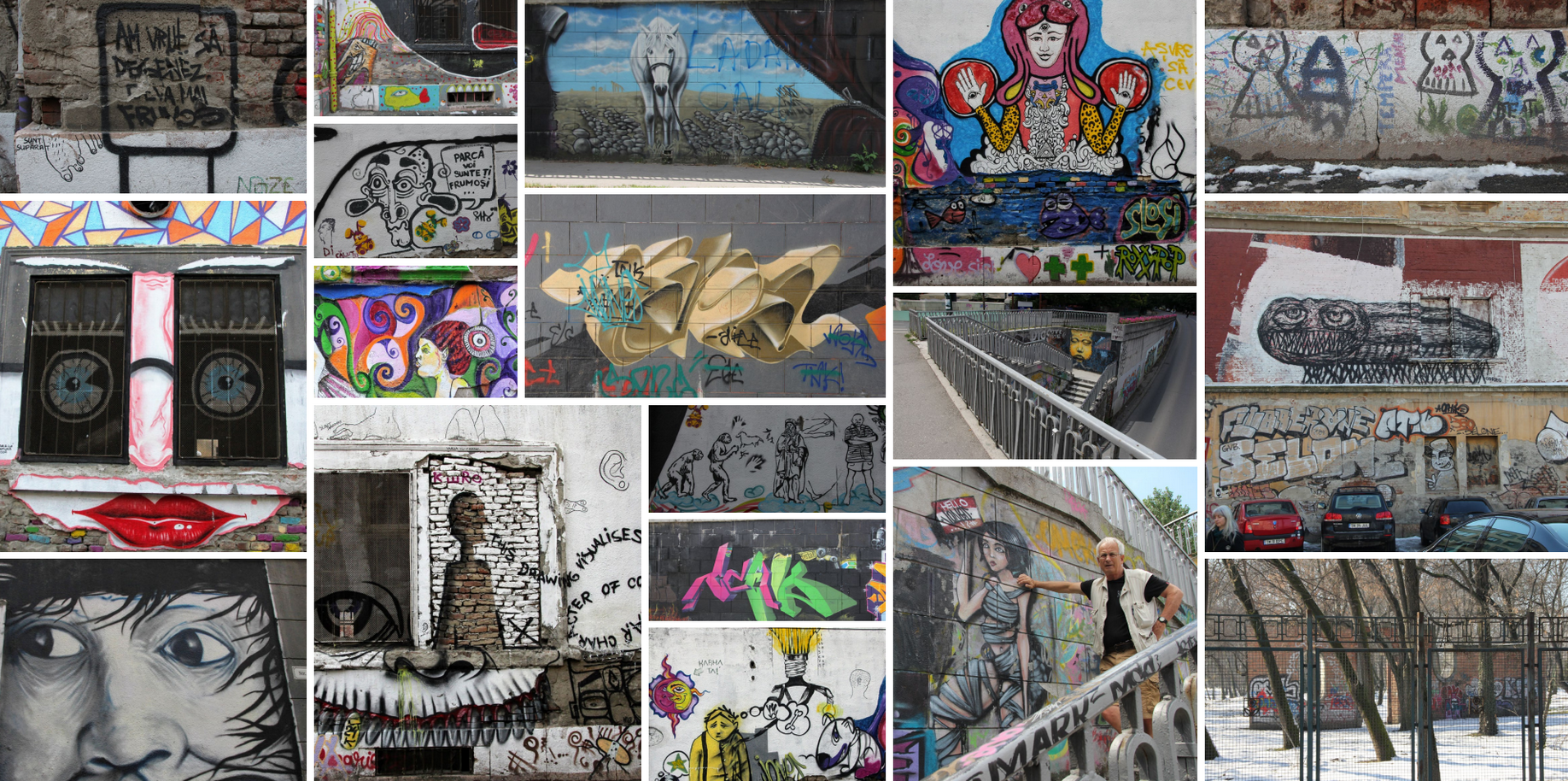
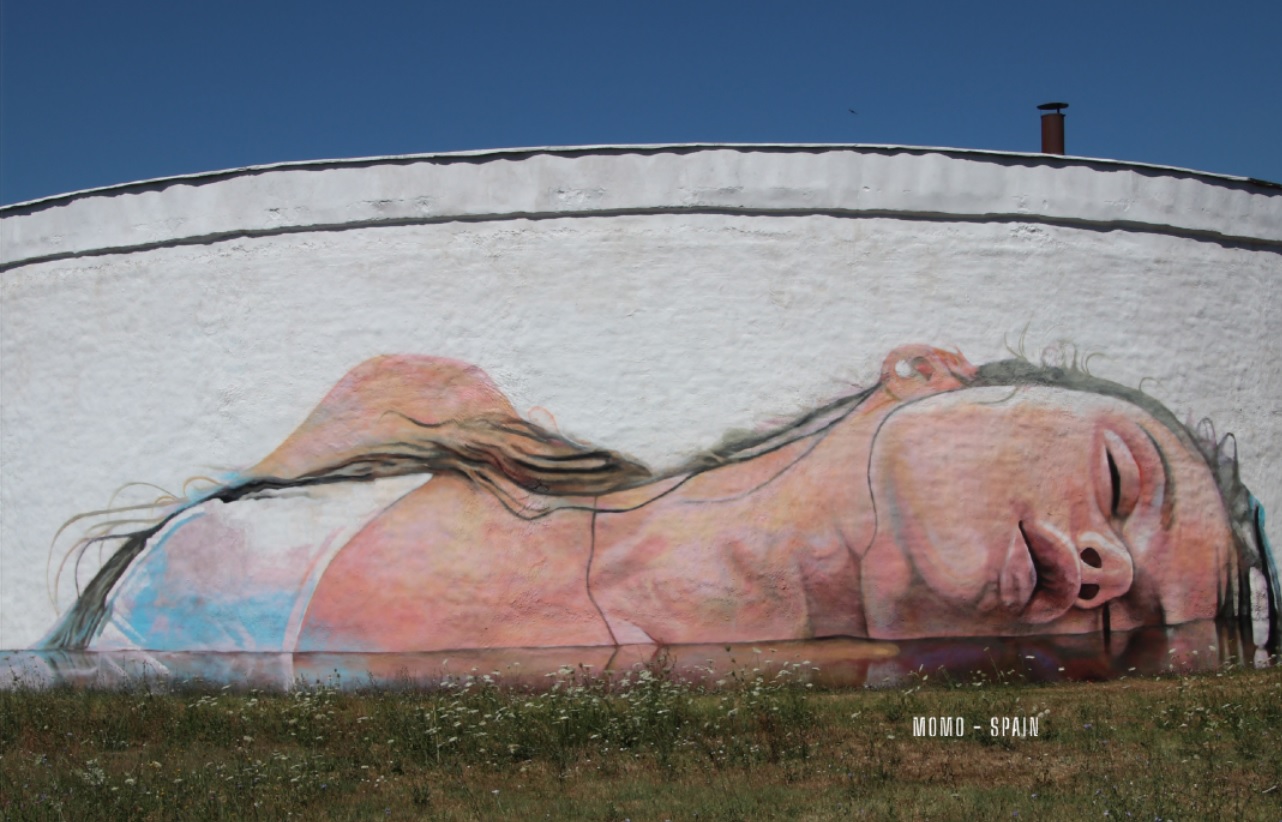
The Photographer – Sergio Morariu Bordan
Hello Sergio, you are the photographer who took the interesting photos for the book FISART RETROSPECTIVE. First of all, tell us something about yourself and your work related to photography and graffiti.
I have been working as a photographer in various fields for many years, often related to development aid and creative projects. My key qualifications are water-resources engineering and power-systems specialization in Romania and other countries. With my EnduRomMania project I was able to combine my love of motorcycling and my home country. I have been organizing photo workshops in Romania since 2007 and since 2010 specifically for art events, such as the FISART Festival from 2011 to 2020. On my platforms I present artists and events with photo and video material and I have also organized a few symposiums and discussions over the years, such as “Art in the Public Space – Concept approached and debated from an interdisciplinary perspective”. With this occasion we received the “Diploma of excellence in the field of Urban Regeneration” from the “Romanian Urbanists Register”. There are numerous reports about my work in Romania and also in other countries such as Peru, Germany or the USA.
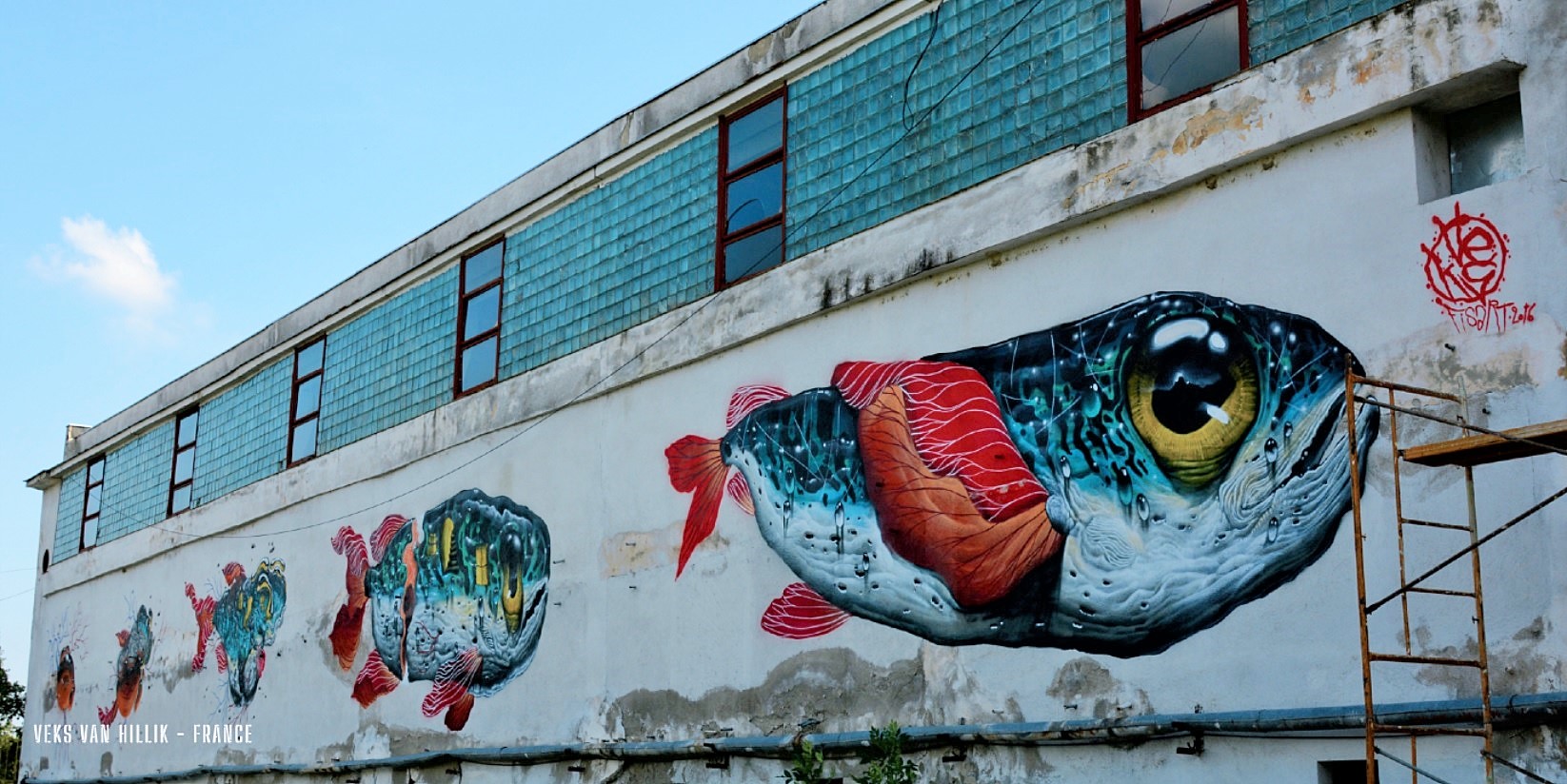
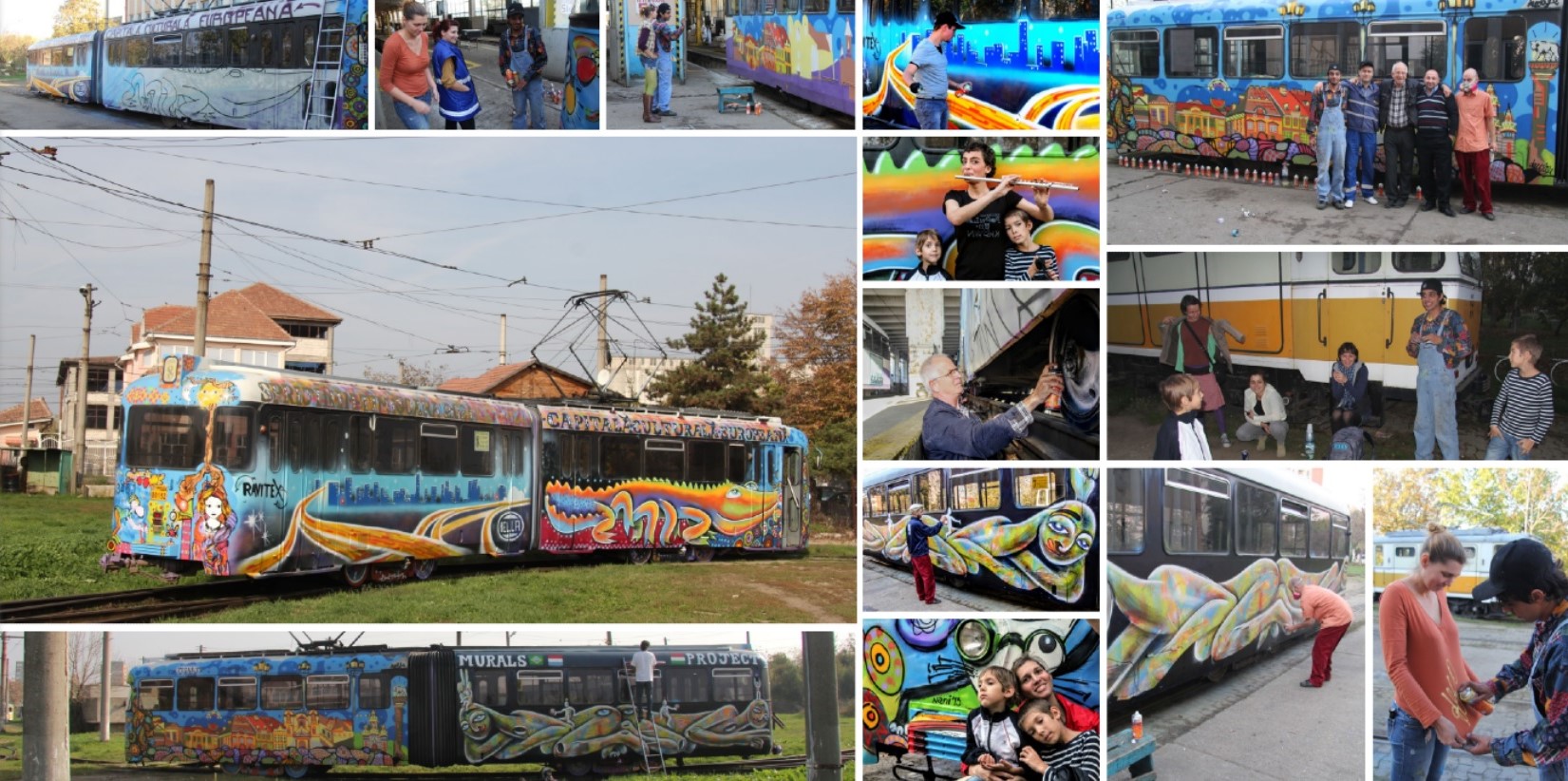
When did you start photographing urban art specifically and what do you like about it?
I’ve been taking pictures for as long as I can remember. But specifically with a focus on urban art, that started because of the creative Wynwood neighborhood of Miami. I discovered this place in 2005, there I started photographing street art extensively.
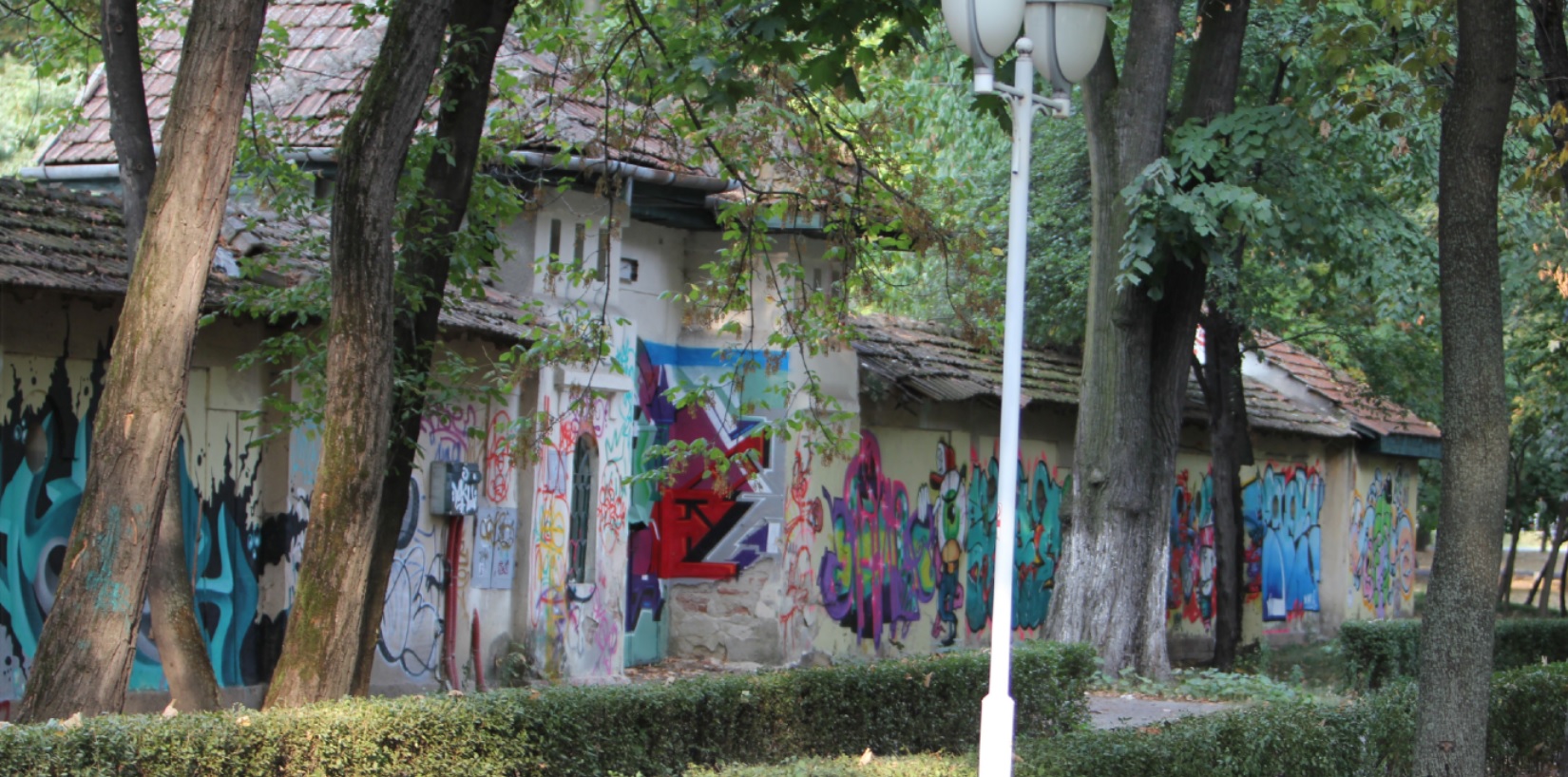
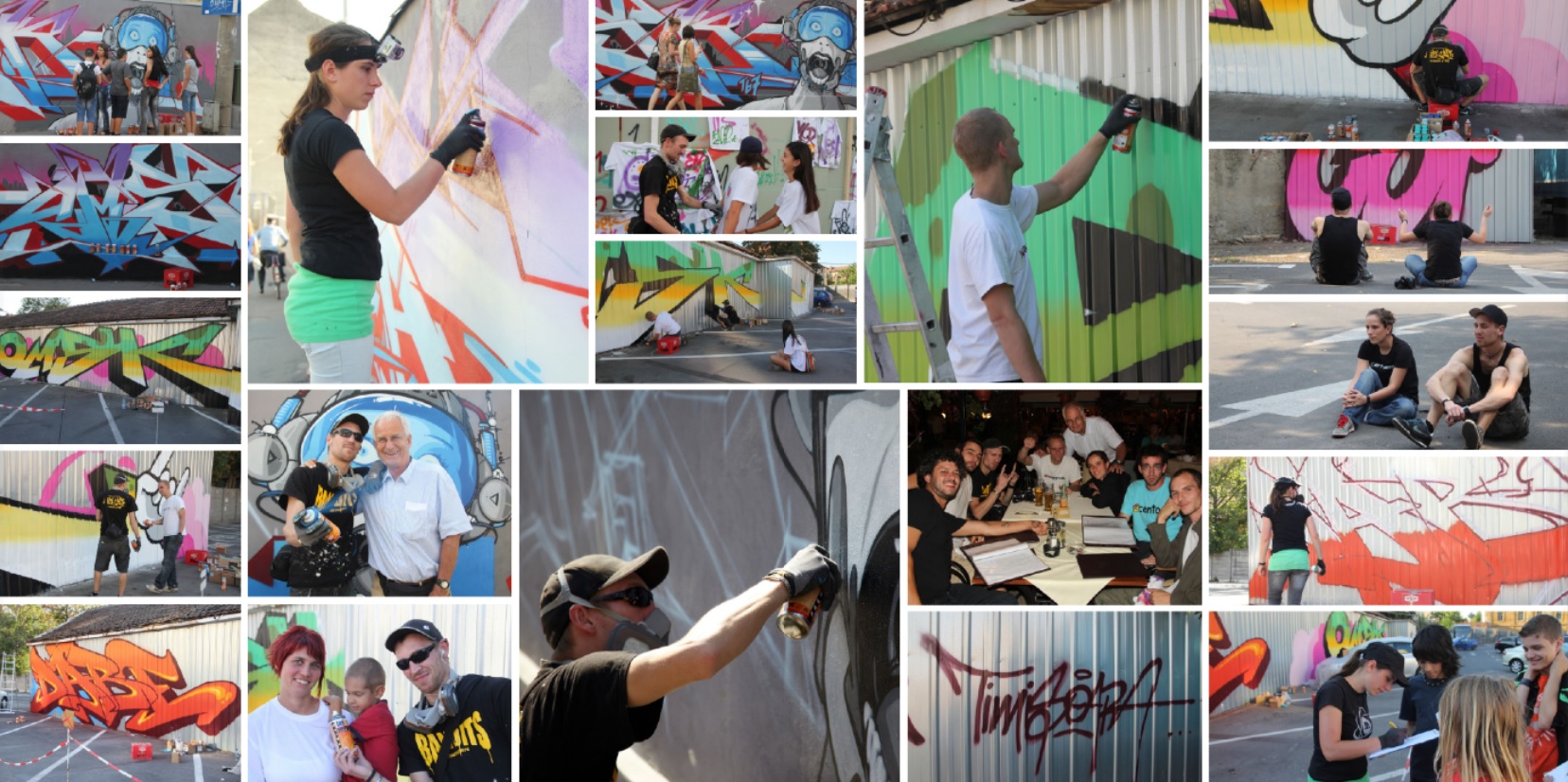
How did your connection to FISART come about and how did you did it happen that you documented the festival that extensively?
I founded FISART together with Corina Nani in 2011, after I reported at the Faculty of Arts about the graffiti / street art works I discovered in Timisoara and Corina made the proposal to organize a festival based on the Timisoara graffiti experience. Corina took care of the artistic aspects and I took care of project management, PR and international relations. We did the coverage together. Corina was mainly responsible for writing and graphic design and I was partly responsible for the concept and photography.
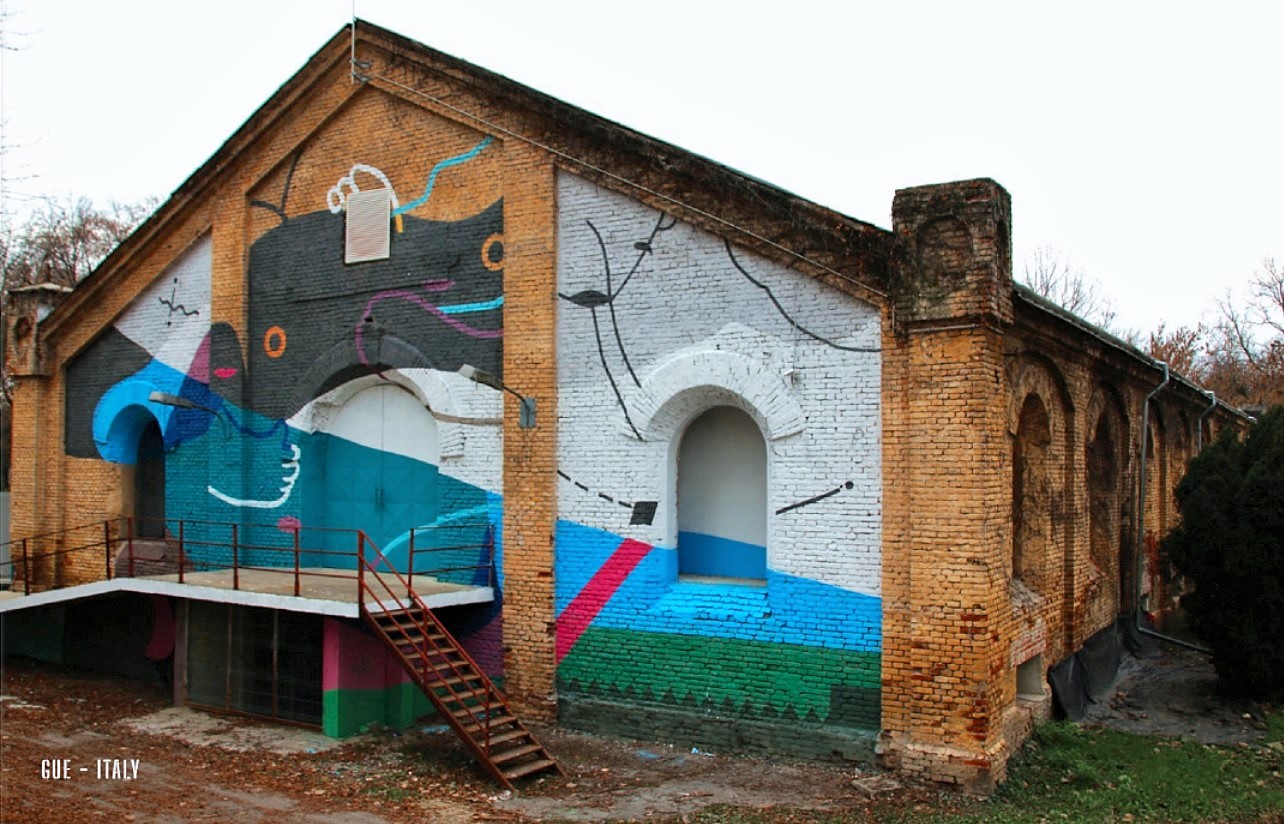
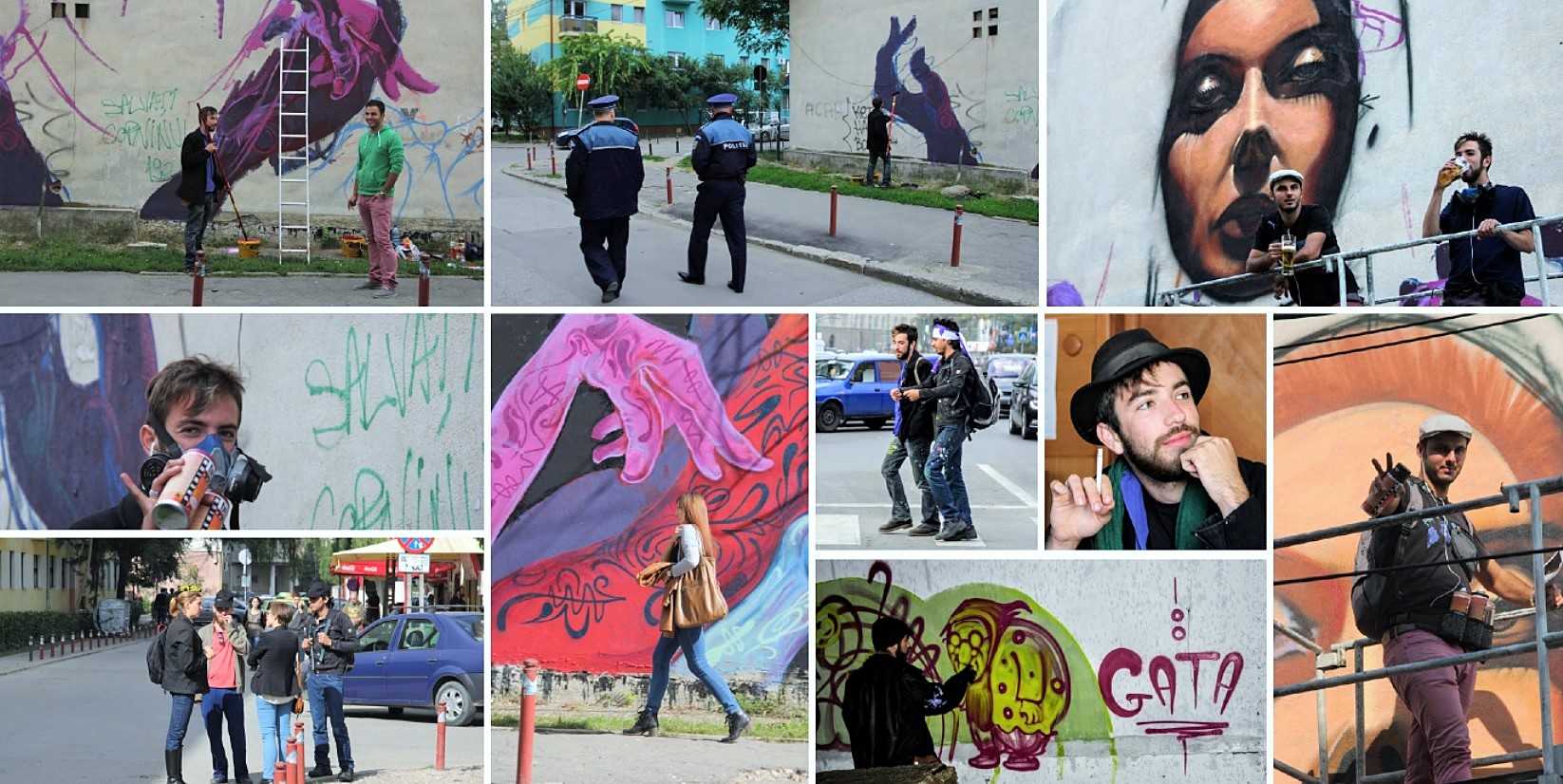
The festival started in 2011 and since then many creative editions of it took place in Timisoara. In 2022 you conceived the book with Corina Nani as a retrospective of the past 10 years. Tell us more about your collaboration and how it came about.
Since the end of January 2011, when we met at the Faculty of Arts in Timisoara, we have continuously worked together and practically constantly accompanied and concretely implemented this project. We have done many projects together during these years. Corina published her many academic publications in journals during these years and passed the necessary exams that allowed her to establish the Street Art Department at the Faculty of Arts in Timisoara. During these years Corina has created many street art works in Romania and abroad. I did a lot of photography and created the accompanying documentation for FISART.
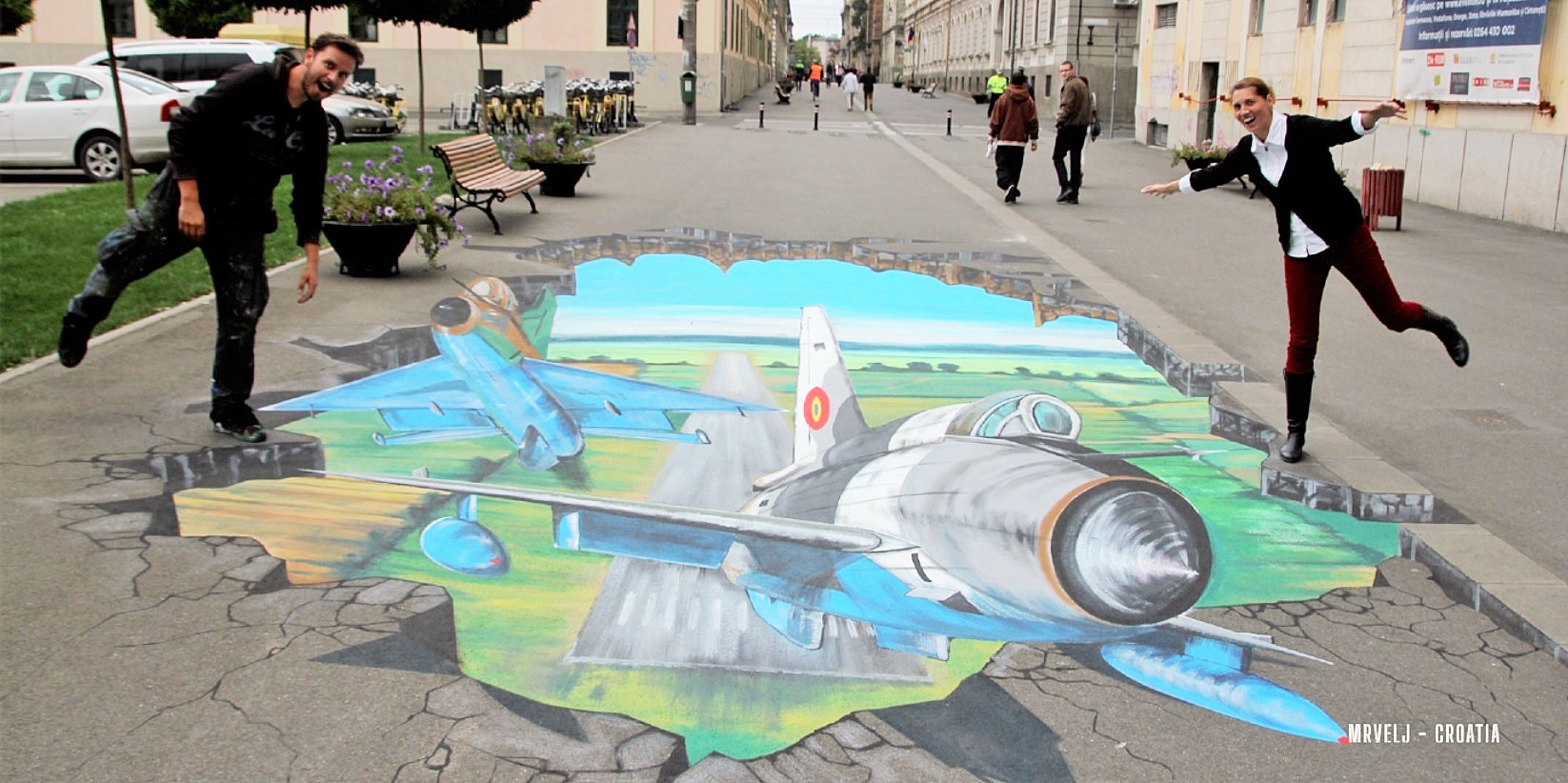
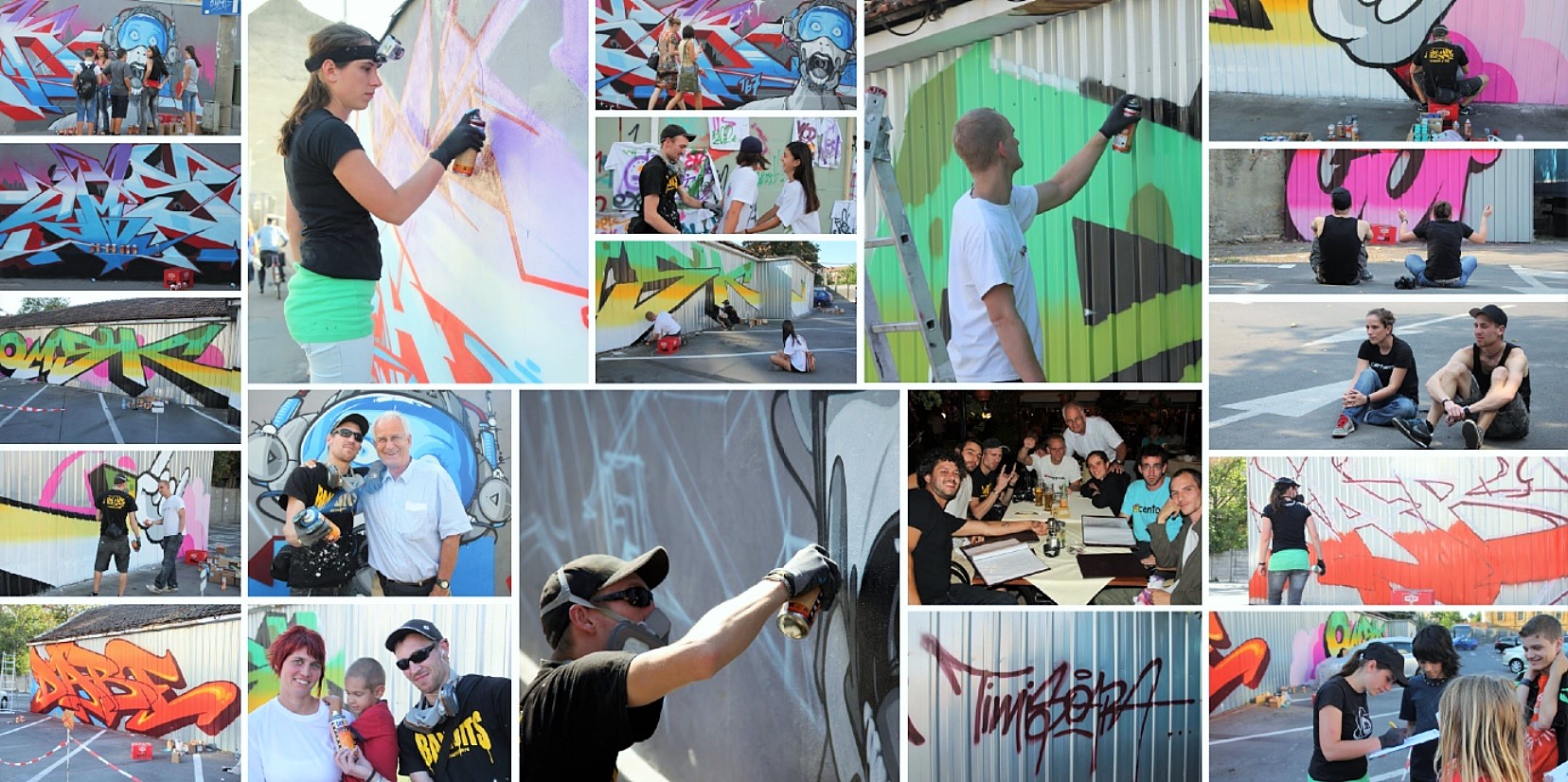
Your work was then published by Emil Banciu’s online platform Banat Media. How did this collaboration come about and how did you create the book together?
Emil Banciu is a good old friend from Timisoara and has included many of our projects in his portfolio. It was a very good collaboration because we supported each other. We provided the material and the audience group and Emil converted our PDF files into his flipbooks. Corina designed the PDF files with my photos. Almost every year there was a flipbook with FISART artworks from the annual edition.
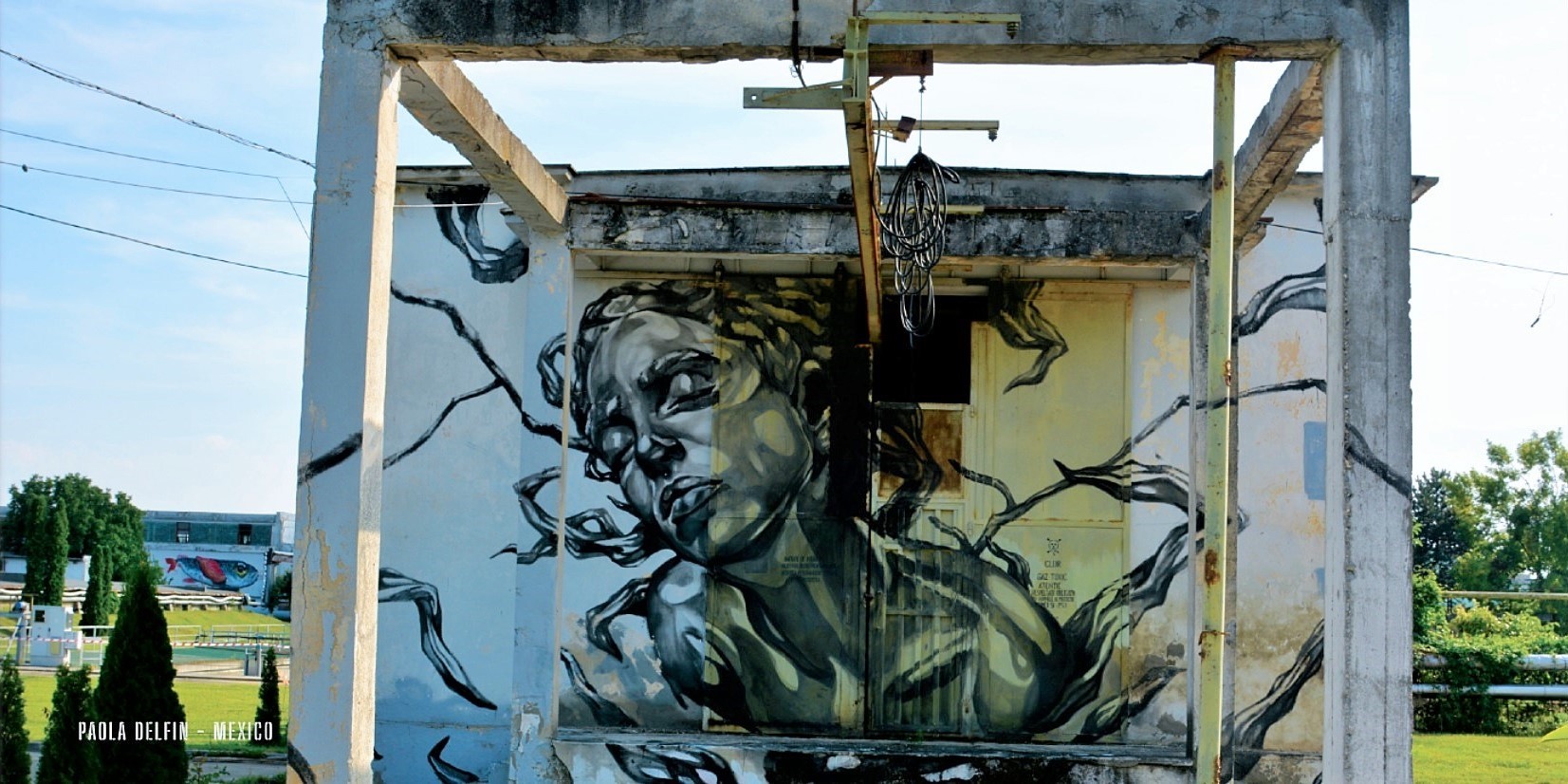
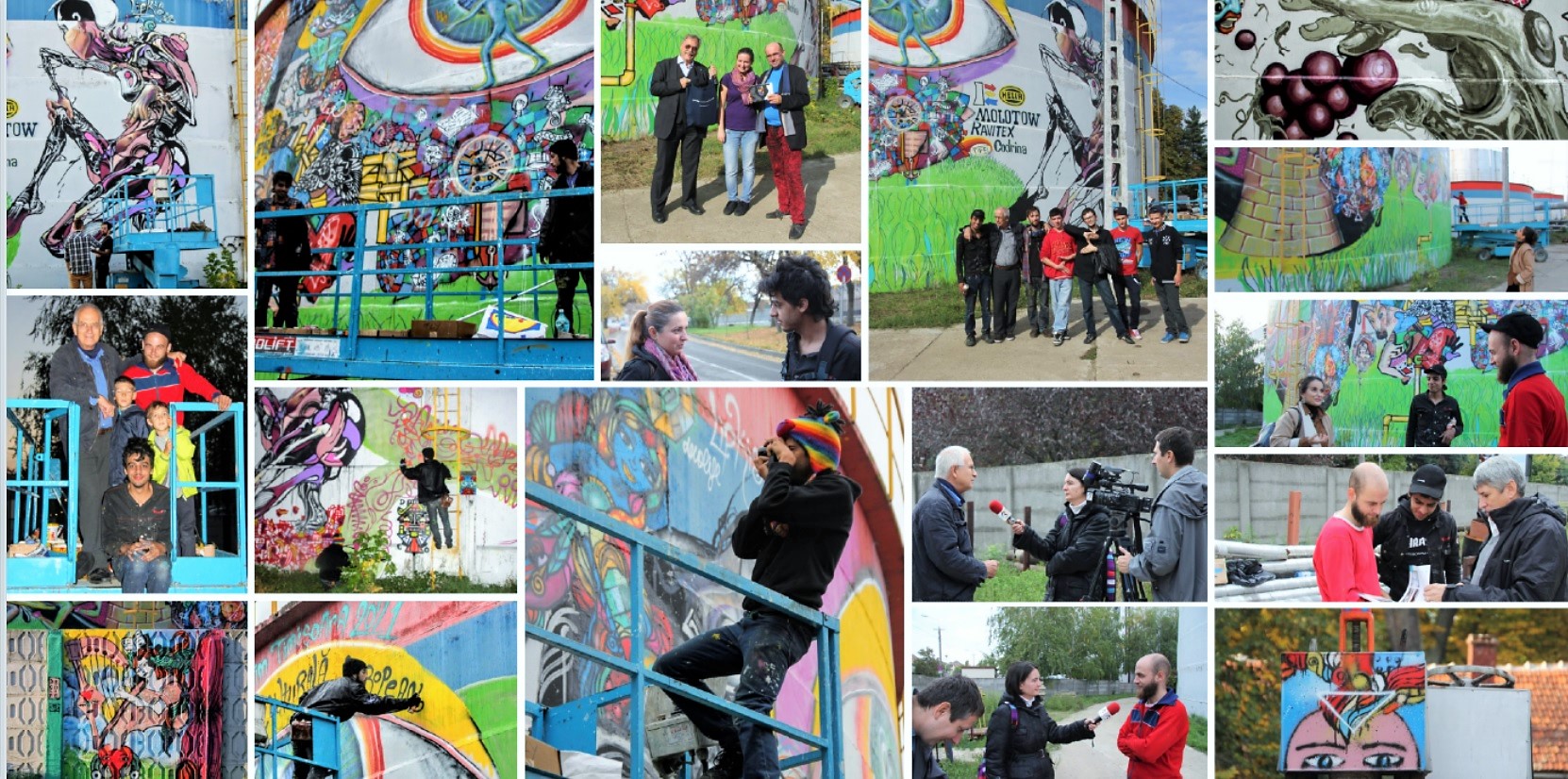
When will the next festival take place? Will there be no more editions or is it finished? And are you still working on the documentation of it?
Due to disagreements with the Cultural Capital Administration of the city of Timisoara, unfortunately at the moment there is no further cooperation planned. Instead, we are cooperating with the cities of Halle and der Saale, Kassel and Tübingen in Germany within the framework of other complex projects.
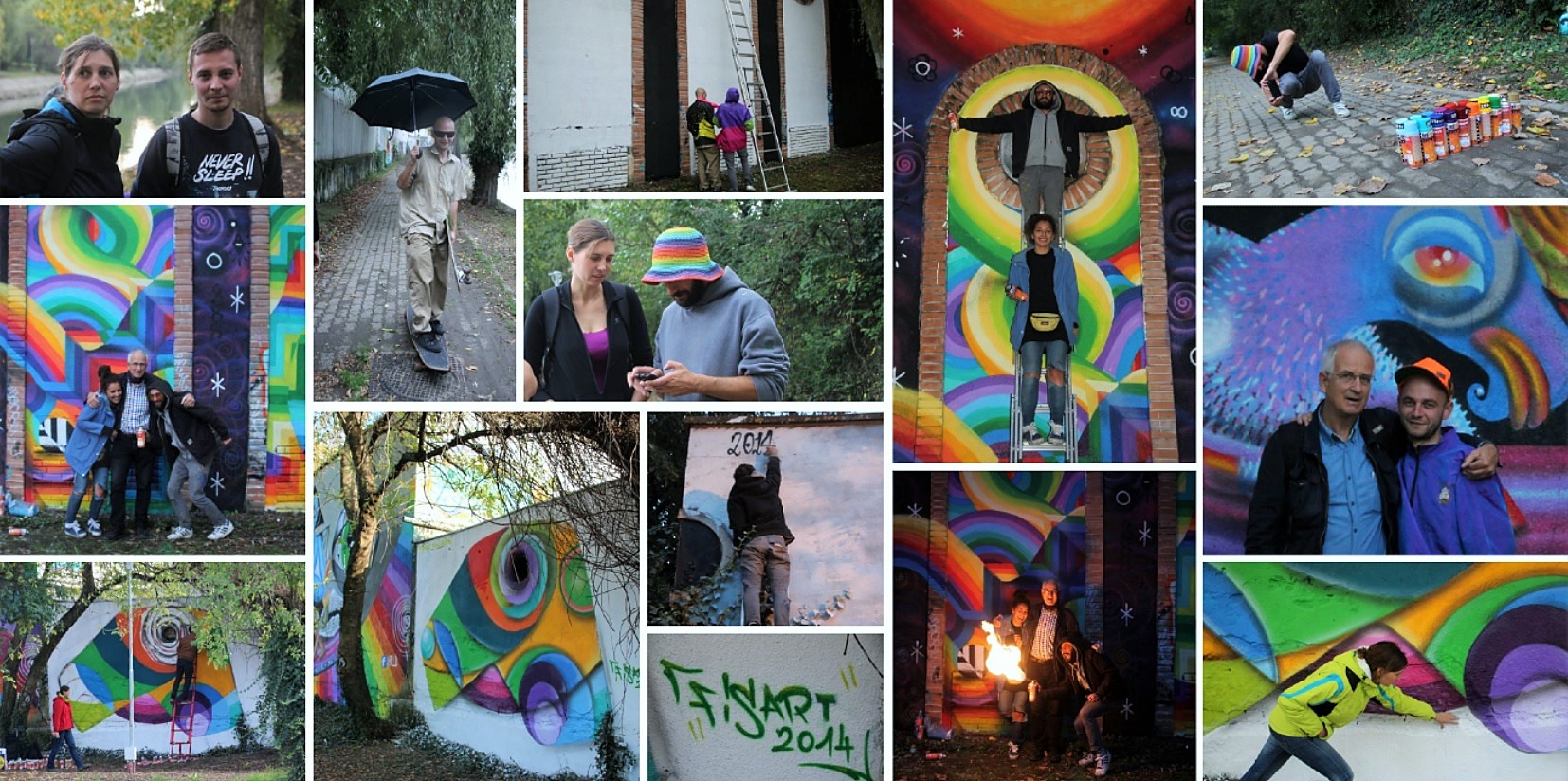
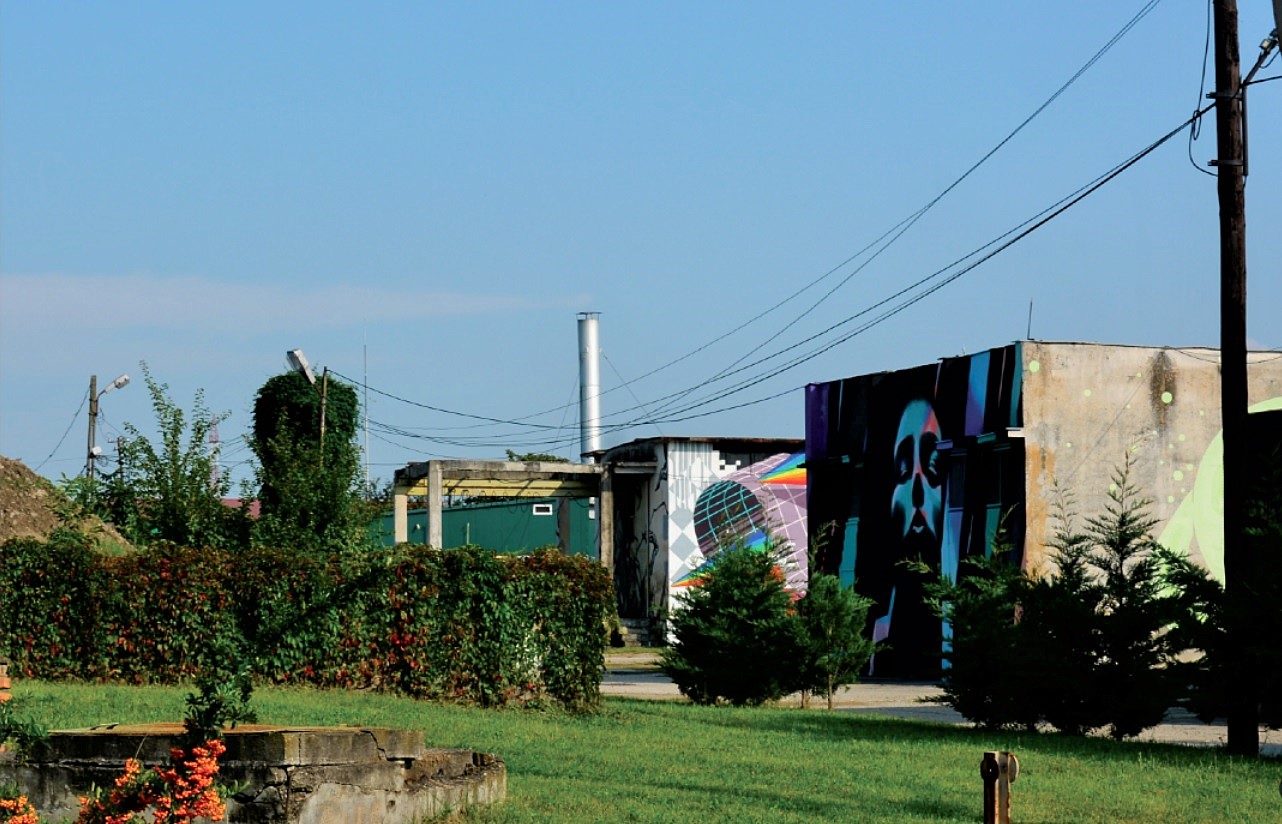
INFOTHEK
![]() Festival Book: FISART RETRSOPECTIVE
Festival Book: FISART RETRSOPECTIVE
![]() Virtual Media: https://banat-media.eu/fisart2022
Virtual Media: https://banat-media.eu/fisart2022
![]() Urban Art Event: FISART – International Street Art Festival Timișoara
Urban Art Event: FISART – International Street Art Festival Timișoara
![]() Blogger: https://streetartfestival.blogspot.com
Blogger: https://streetartfestival.blogspot.com
![]() Facebook: https://www.facebook.com/Timisartfest
Facebook: https://www.facebook.com/Timisartfest
![]() Instagram: https://www.instagram.com/fisart_fest
Instagram: https://www.instagram.com/fisart_fest
![]() Publisher: EMIL BANCIU – BANAT MEDIA
Publisher: EMIL BANCIU – BANAT MEDIA
![]() Email: info@banat-media.eu
Email: info@banat-media.eu
![]() Website: https://banat-media.eu
Website: https://banat-media.eu
![]() Facebook: https://www.facebook.com/profile.php?id=100016382742961
Facebook: https://www.facebook.com/profile.php?id=100016382742961
![]() Author & Festival Initiator: CORINA NANI
Author & Festival Initiator: CORINA NANI
![]() Email: corinani@gmail.com
Email: corinani@gmail.com
![]() Website: https://corinani.art
Website: https://corinani.art
![]() Facebook: https://www.facebook.com/corina.nani
Facebook: https://www.facebook.com/corina.nani
![]() Behance: https://www.behance.net/corinanani
Behance: https://www.behance.net/corinanani
![]() Youtube: https://www.youtube.com/@corinani1
Youtube: https://www.youtube.com/@corinani1
![]() Photographer & Festival Initiator: SERGIO MORARIU BORDAN
Photographer & Festival Initiator: SERGIO MORARIU BORDAN
![]() Email: sergio.enduromania@gmail.com
Email: sergio.enduromania@gmail.com
![]() Website: http://enduromania.net – http://mobile.enduromania.net
Website: http://enduromania.net – http://mobile.enduromania.net
![]() Website: http://pensiuneabrebunou167.enduromania.net
Website: http://pensiuneabrebunou167.enduromania.net
![]() Website: http://virtualfisart.enduromania.net
Website: http://virtualfisart.enduromania.net
MORE ARTICLES ABOUT ROMANIA
>>> Road Trip Banat <<<
>>> Streetart Timișoara <<<
>>> Ghizela / Giseladorf <<<
>>> Timișoara – City Reportage <<<
>>> Covaci / Kowatschi <<<
>>> Șandra / Alexanderhausen <<<
>>> Cenad / Tschanad <<<
>>> Buziaș / Bad Busiasch <<<
>>> Timișoara – Mehala <<<
>>> Ghizela / Giseladorf – Church <<<
>>> Ghizela / Giseladorf – Cemetery <<<
>>> Banat – Churches <<<
>>> Banat – Cuisine <<<
>>> Banat – Vehicles <<<
>>> Banat – Dogs <<<
